Savannah is a beautiful city with such a complicated history. A good portion of the Historic District was built by enslaved men and women, and — to truly appreciate its beauty — it’s important to acknowledge how the city came to be.
With that in mind, here are some of the best Black history tours in Savannah, with a focus on the ones that make every attempt to get the details right.
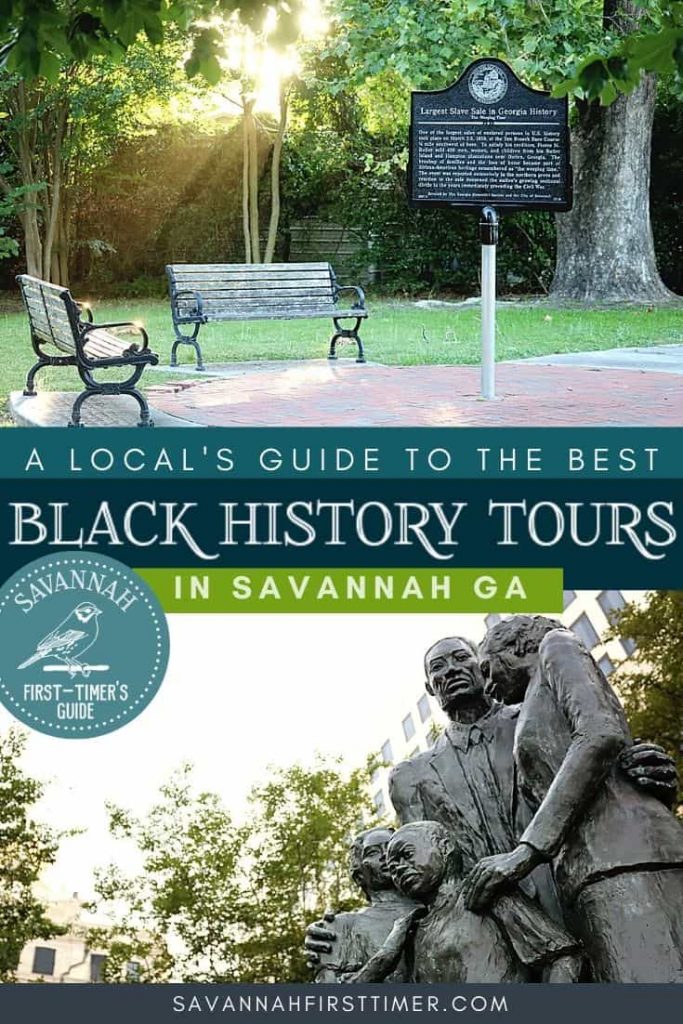
Note: This guide contains affiliate links to my trusted travel partners.
If you’re new around here, first of all… allow me to extend a warm welcome!
My name is Erin, and I authored the Savannah First-Timer’s Guide. It combines my top Savannah travel tips from this website into one handy downloadable guide.
Table of Contents
Black History Tours in Savannah GA
If you’re wondering why you should schedule a Black history tour when you visit Savannah, it’s because it will help you to better understand the complex dynamics of the city.
The tours I’m recommending below are informative ones that will help you learn more about the collective contributions from the Black community — both enslaved and freed.
In a hurry? Here is my top recommendation:
➡️ From Slavery to Freedom Tour
You might also be interested in reading:
➡️ A Local’s Guide to the Best Things To Do in Savannah, Georgia
➡️ Savannah Must-See Spots for First-Time Visitors
Pin Point Heritage Museum
Pin Point has long been one of my favorite tours in Savannah! It’s one of the “must see” spots I recommend anytime I have friends or family in town for a visit, and it’s one of the Top 10 attractions listed in my Savannah travel guide.
Y’all, this tour is SO GOOD, so informative, and 100% worth a visit!
The community of Pin Point was established back in 1896. It was founded by descendants of the enslaved men and women who arrived in Savannah from Central and West Africa via the Transatlantic Trade Route.
Those original founders purchased slivers of land along the marsh just south of Savannah and formed the small, self-sustaining community known as Pin Point.
Their main source of income was the A.S. Varn and Sons Oyster Factory, which currently operates as Pin Point Museum.
The tight-knit community was known for their crabbing, shrimping, and oyster harvesting operations. Some of their oyster products were even served at the White House!
Descendants of the original landowners will show you around the former oyster factory while teaching about the beautiful philosophy of the Gullah Geechee people — which is essentially to live off the land and seek only what you need, versus chasing after “wants”.
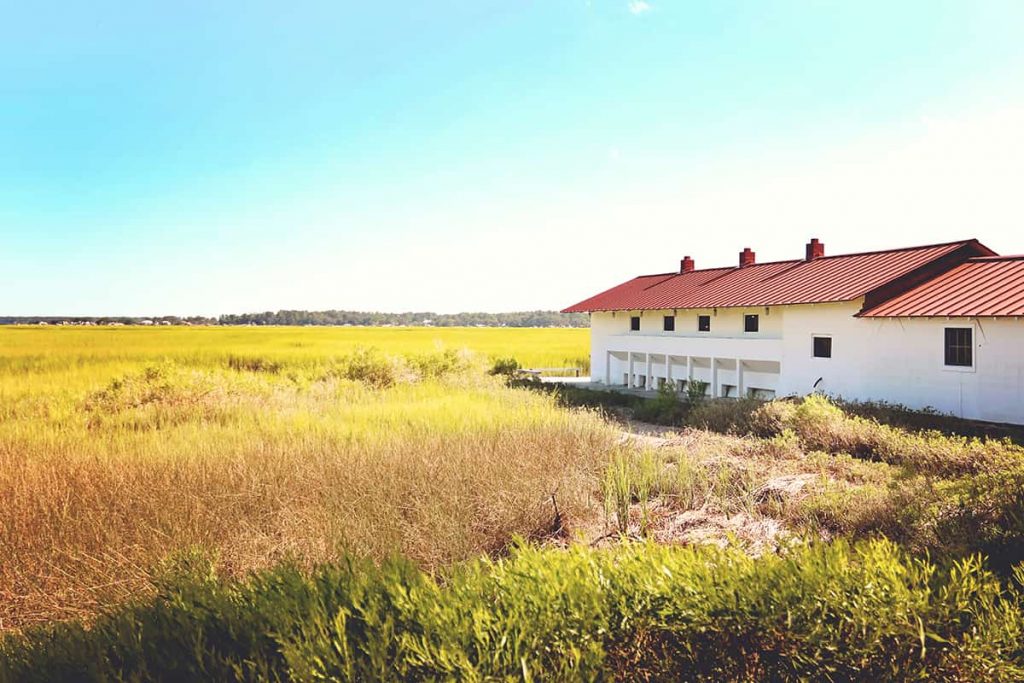
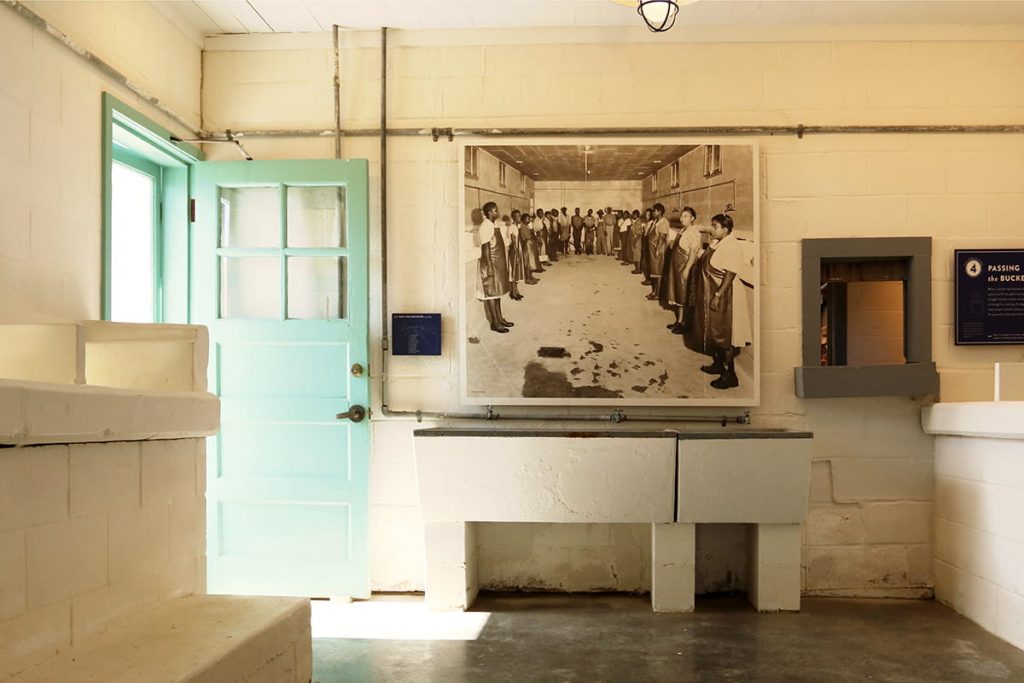
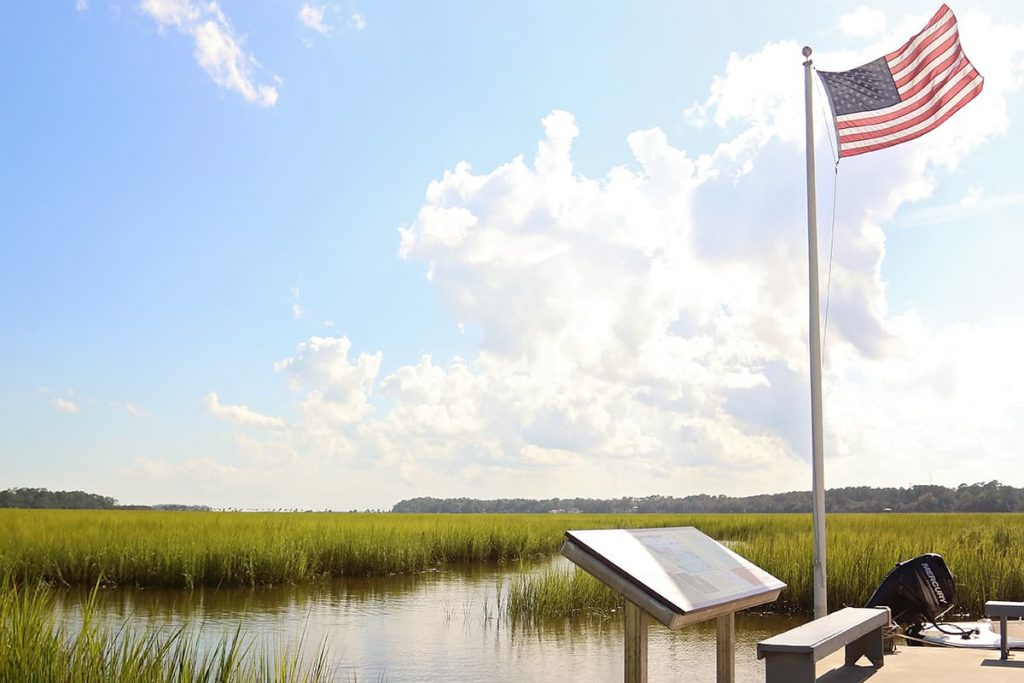
The site is run by the Coastal Heritage Society, and there are learning stations set up throughout the museum.
You can do a self-guided tour, but it’s much better to go on a guided one.
Why It’s Worth Visiting
In addition to being one of the best places in Savannah to learn about the Gullah Geechee culture, Pin Point is also a stunningly beautiful property.
The sunset views from there and nearby Butter Bean Beach are spectacular!
Depending on who you have as your guide, you might learn some of the Gullah language and even a few celebratory dance moves while you’re there.
If Gail Smith is available, I highly recommend requesting her to show you around!
Know Before You Go
- Website: Pin Point Heritage Museum
- Location: 9924 Pin Point Avenue, Savannah, GA 31401
- Tickets: From $5 – $9
- Parking: Their on-site parking lot fits approximately 15 to 20 vehicles
- Time to Allot: Plan on spending two hours at the site
- Note: You’ll need transportation to get to Pin Point from the Historic District
Local Insight: Pin Point is known for being the birthplace of U.S. Supreme Court Justice Clarence Thomas.
FAQ: What Does Gullah Geechee Mean?
Gullah Geechee is a term you’ll hear frequently in Savannah.
The Gullah Geechee people are descendants of West Africans who were enslaved, brought to the U.S., and forced to work on rice, cotton, and indigo plantations throughout the Coastal Empire and the Lowcountry — like the Sea Island cotton plantations on Cumberland Island, for example.
Islanders in the lower region of South Carolina are usually considered Gullah, while Georgians are referred to as Geechee.
“Gullah Geechee” is a sweeping term that encompasses the two. The local dialect is also sometimes referred to as Gullah.
The Gullah Geechee Historical Corridor was established by Congress in 2006 as a National Heritage Area and covers coastal regions in Florida, Georgia, South Carolina, and North Carolina.
Owens-Thomas House
The Owens-Thomas House and Slave Quarters is where you’ll best see the stark contrast between Savannah’s “haves” and “have nots”.
The main home, circa 1819, was designed by architect William Jay — the architect for many of Savannah’s notable buildings — and was built in the Regency style.
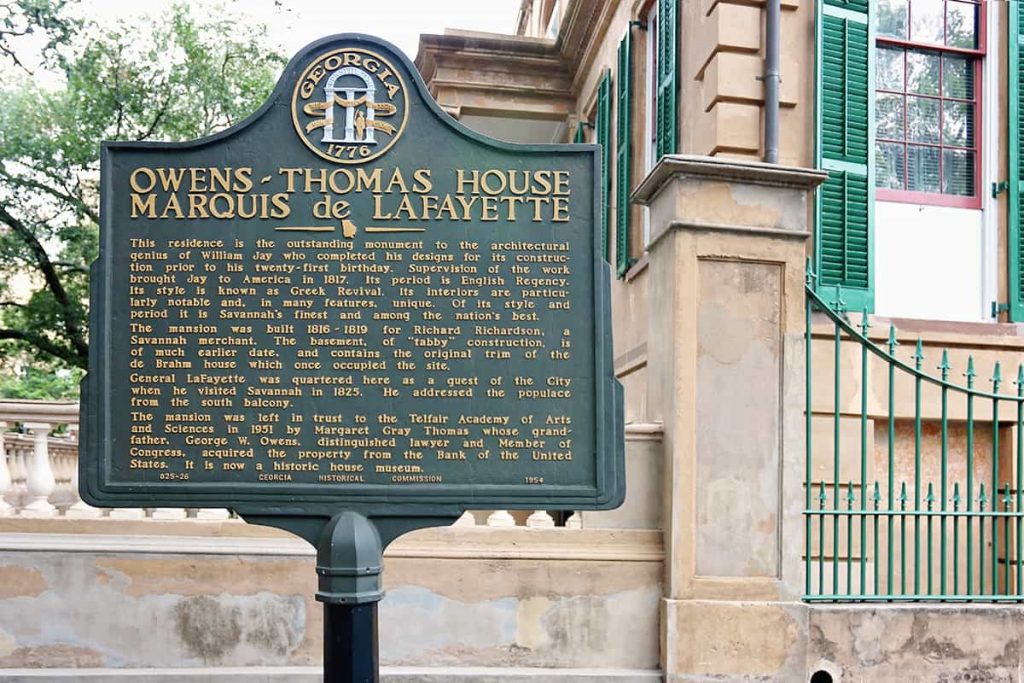
Before touring the mansion, you’ll walk through a small welcome center where you can watch educational videos pertinent to the time period.
The home is listed on the National Register of Historic Places.
The back wall of the welcome center honors enslaved individuals who worked in the home.
It’s a very simple wall covered in names and blank boards representing those whose names could not be retrieved, but it’s particularly memorable.
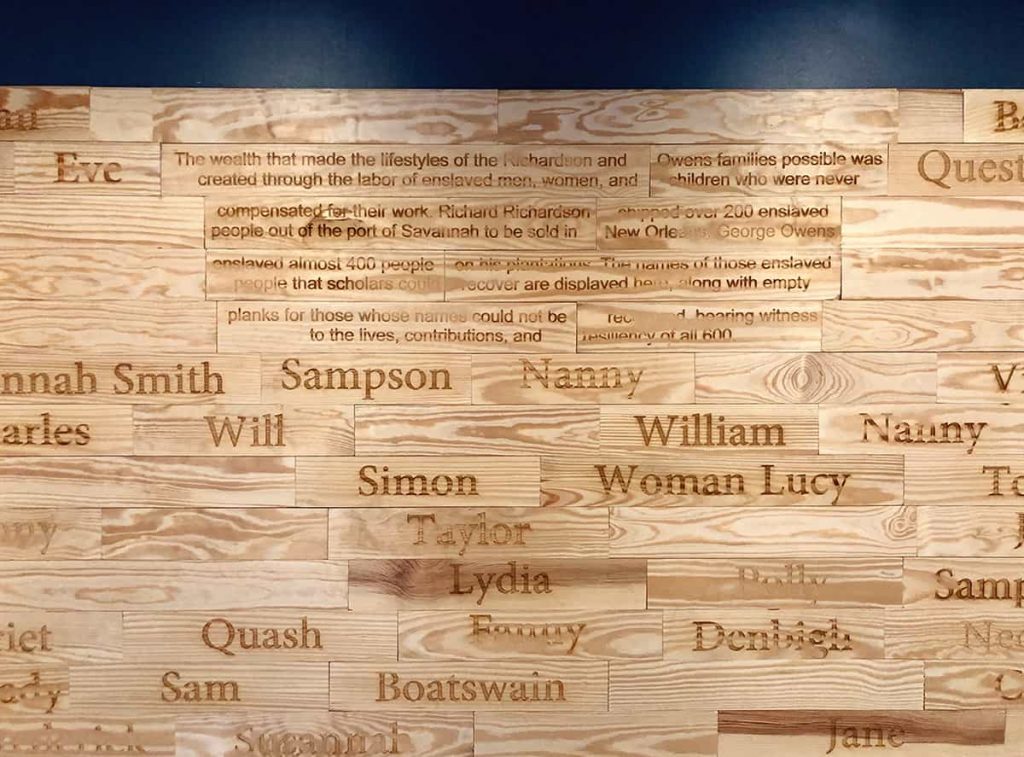
Next, you’ll enter the area where enslaved families resided and will learn what life was like for the men and women who worked inside the home.
Those families were essentially on call 24/7 and worked under the constant scrutiny of the homeowners. They tended to the every need of their enslavers.
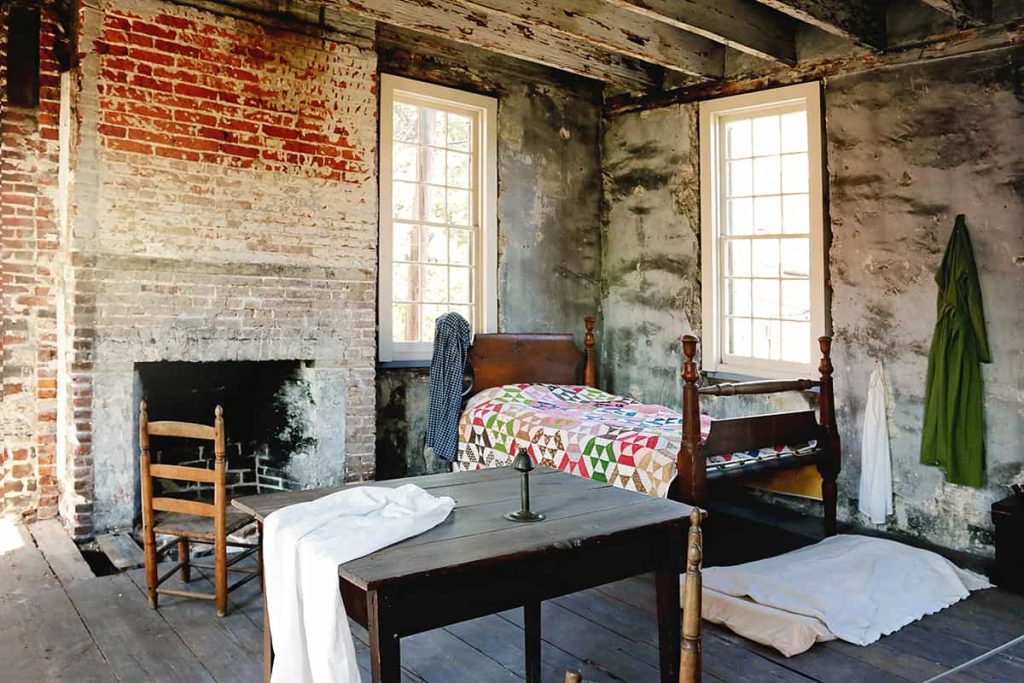
On the flip side, once you enter the main house, you’ll see how some of the wealthiest members of Savannah society lived in the early to mid 1800s.
It’s quite a stark contrast!
The home was clearly designed to entertain and is filled with collectibles and state-of-the-art amenities.
It even had plumbing on all three floors during a time period when employees at the White House were still carrying buckets of boiling water up the stairs for presidential families to use for bathing.
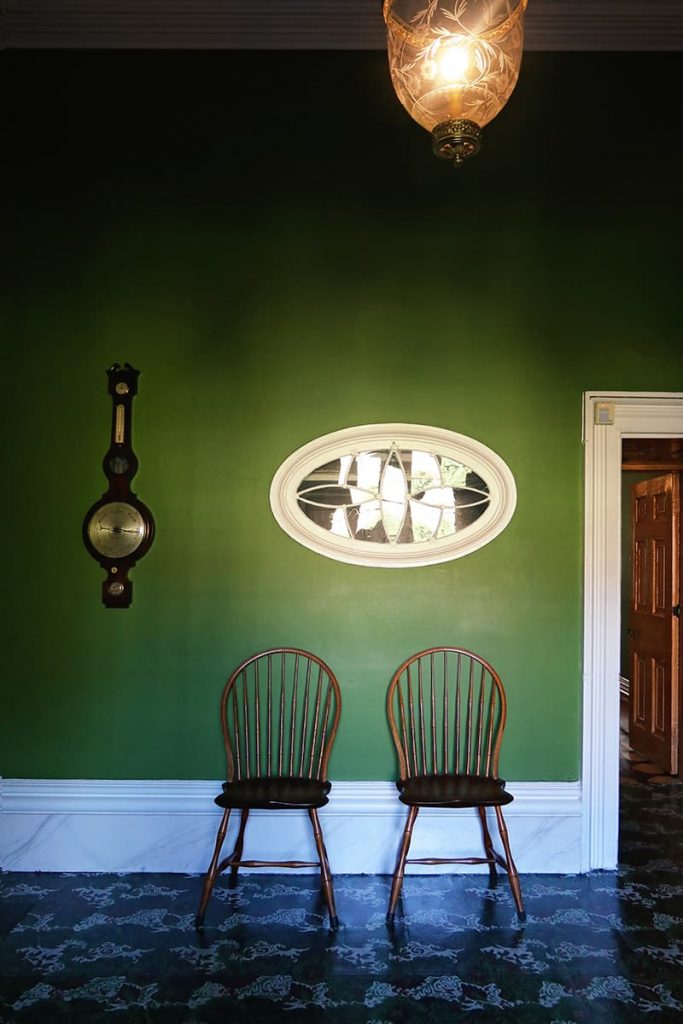
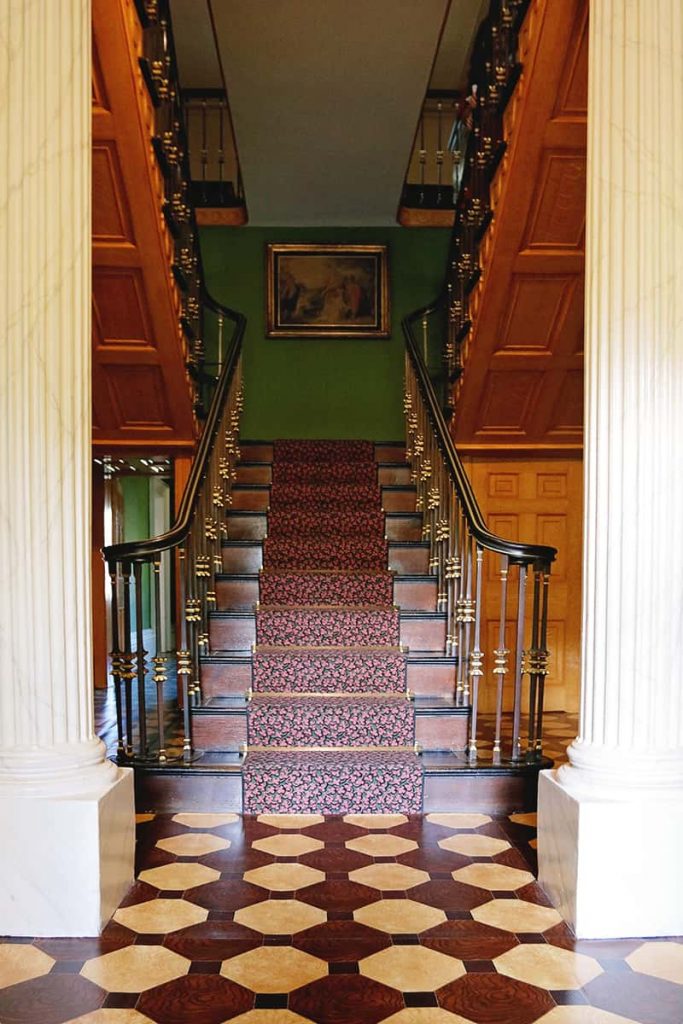
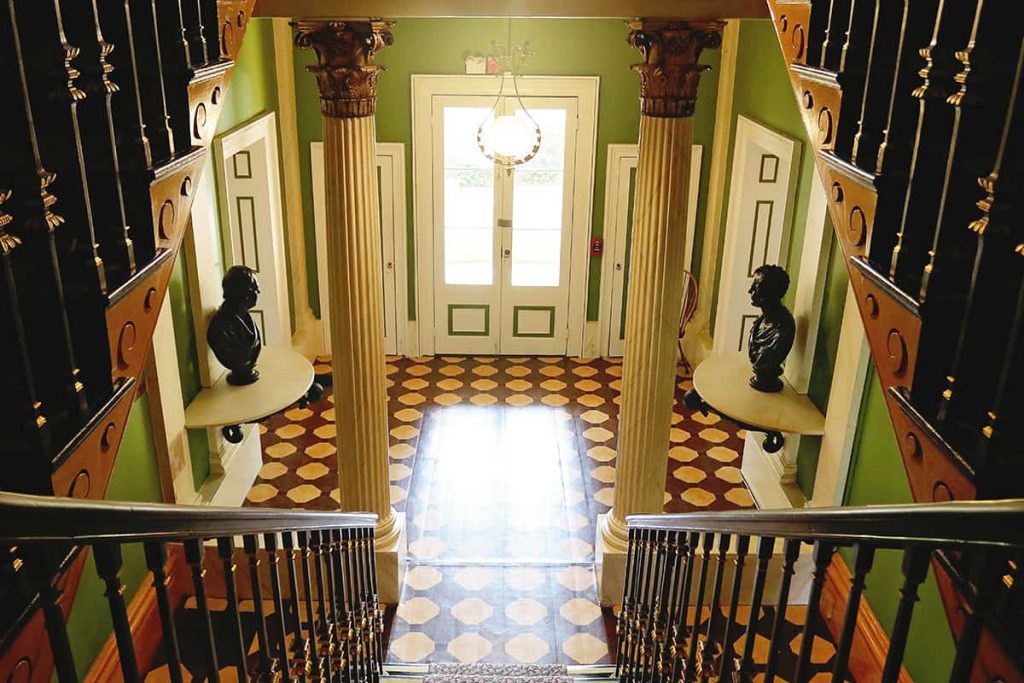
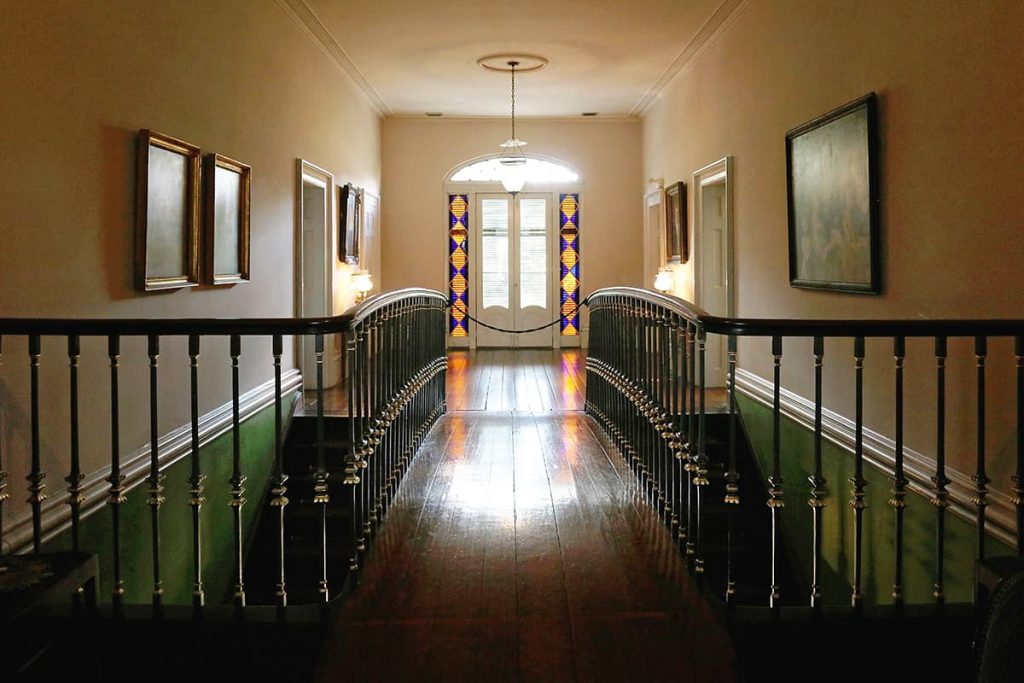
The entire house is fascinating, but I usually spend the majority of my time in the carriage house and the basement area, which is in near original condition.
The basement is where enslaved children were tasked with boiling huge pots of water over the fireplace, which they then poured into large containers that were used for laundry.
The children regularly dealt with scalding hot water and harmful substances, such as lye.
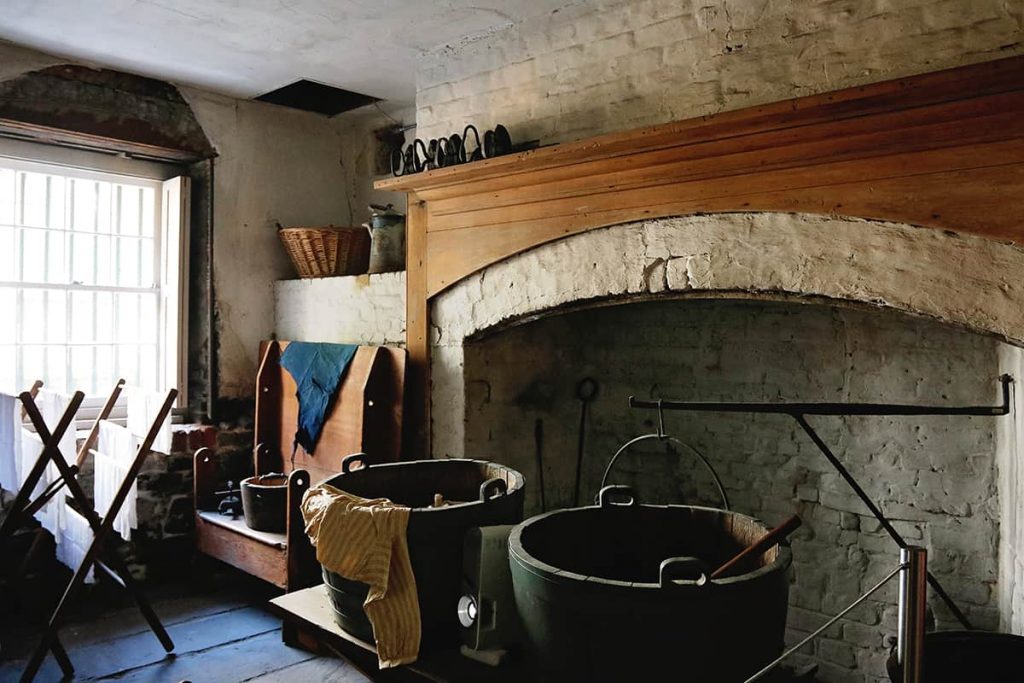
Both the Owens-Thomas house and the area that housed enslaved families are extraordinarily well-preserved.
In some areas of the main home, sections of the floors have been replaced with glass so you can see how the advanced plumbing system worked.
There’s ample signage throughout the home explaining how each area functioned.
Why It’s Worth Visiting
If you want to learn what life was like for both wealthy and enslaved Southerners during pre-Civil War times, the Owens-Thomas House and Slave Quarters is one of the more “complete picture” educational tours you can take in Savannah.
Whenever I tour this house, I’m reminded that the early success of this city (and much of the Deep South, in general) was only made possible through the arduous work of enslaved laborers.
It’s a regrettable time in our country’s history, but it’s one that needs to be remembered so it won’t be repeated.
Know Before You Go
- Website: Owens-Thomas House and Slave Quarters
- Location: 124 Abercorn Street, Savannah, GA 31401
- Tickets: The $20 ticket is a 3-for-1 fee that also grants entry to nearby Telfair Academy and Jepson Center for the Arts. Pay close attention to the instructions that come with your tickets, as you’ll need to stop by in-person to reserve a time slot for your tour.
- Parking: Street parking in the immediate area is metered.
- Time to Allot: The self-guided audio portion of the tour only takes about 45 minutes, but you can explore the basement on your own and it’s filled with treasures. Plan to spend another 30 minutes or so there.
Local Insight: The upper level of the interior of the main house has a very unique indoor bridge, and the ceiling in the slave quarters still shows remnants of the original “haint blue” paint, which was made from indigo dye. The Marquis de Lafayette once stayed in the home and gave a speech from one of the balconies.
FAQ: What is Urban Slavery?
Savannah’s plantation owners usually resided in town — not in fancy plantation homes like you see in Gone With the Wind and similar movies.
They hired overseers to run their plantation properties, which were located in marshy areas on the outskirts of Savannah.
The plantations often had unsanitary conditions, and it was all too easy to catch malaria in the rice fields, so for those reasons the property owners preferred to live in town.
Enslaved men and women often lived inside their enslaver’s urban homes and labored daily to keep the property running smoothly.
The concept is referred to as urban slavery, and it’s what you’ll learn about during the Owens-Thomas House and Slave Quarters tour.
First African Baptist Church Savannah
First African Baptist Church is yet another of my all-around favorite tours in Savannah.
It’s amazing how much information the guides pack into a relatively short time frame. Ninety minutes pass all too quickly, and — if you’re anything like me — you’ll find yourself wishing it lasted longer!
The FABC congregation first organized in 1733, and the building is a registered National Historic Landmark.
The tour focuses on notable pastors who served the church through the years, architectural features of the building, and the church’s important role in the Underground Railroad.
You’ll learn about the many hidden symbols found throughout the church and can even see where holes were punched into the floorboards on the lowest level of the building to circulate air for those hiding below.
The entire church was a labor of love that was constructed at odd times — often at night — by enslaved workers whenever they could manage to find free moments of time.
I don’t want to share too much, because I want you to go and experience this tour for yourself!
The oldest black congregation in North America began in 1773. May 20, 1775 the church was born with Rev. George Leile as its pastor; and constituted January 20, 1788 with Rev. Andrew Bryan, Pastor.
The First African Baptist Church North America – Historic plaque by the front door
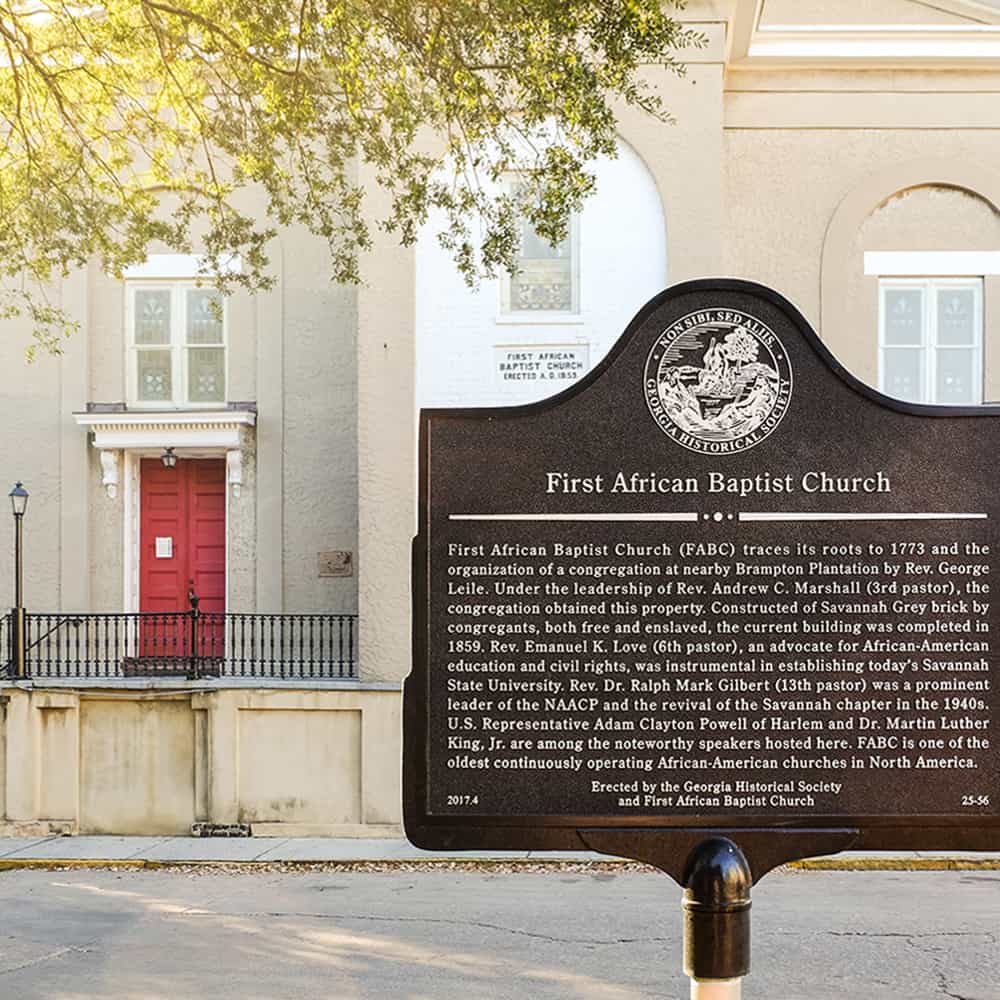
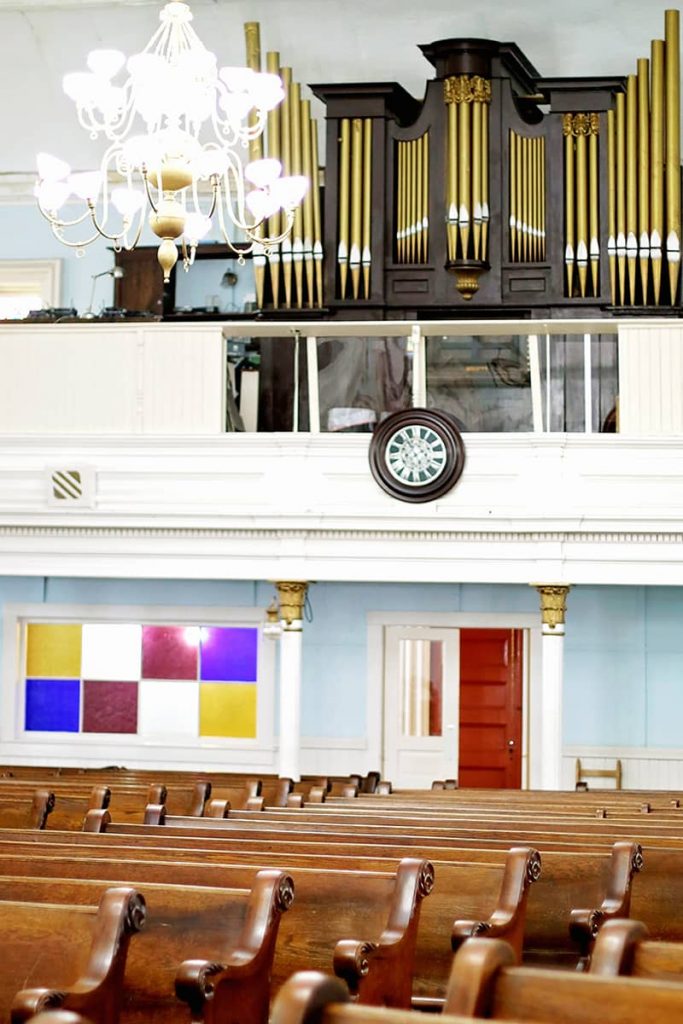
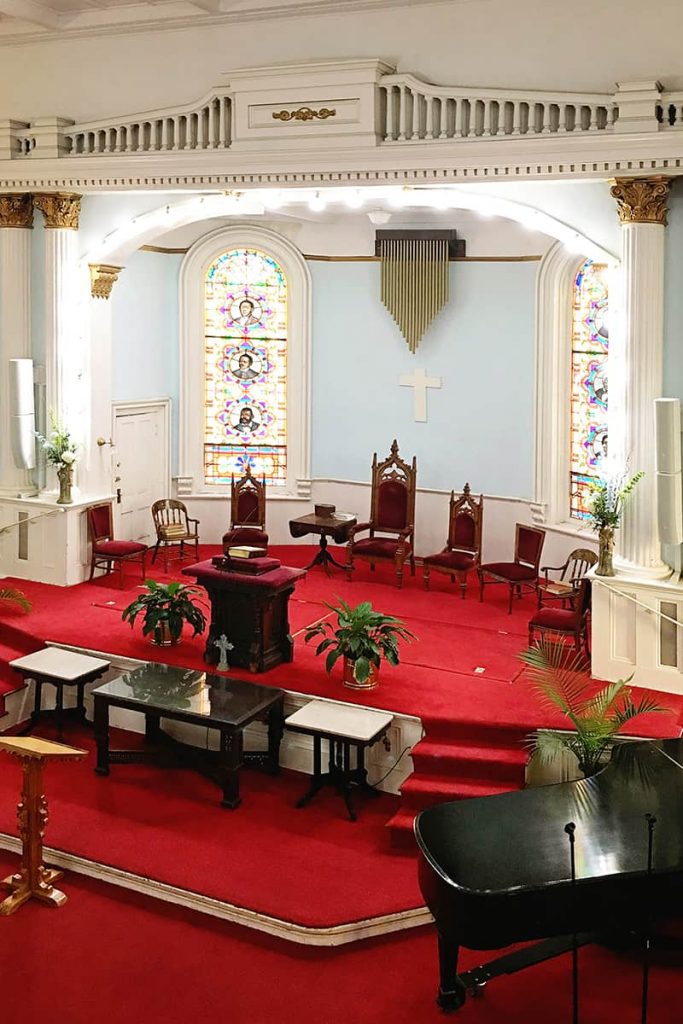
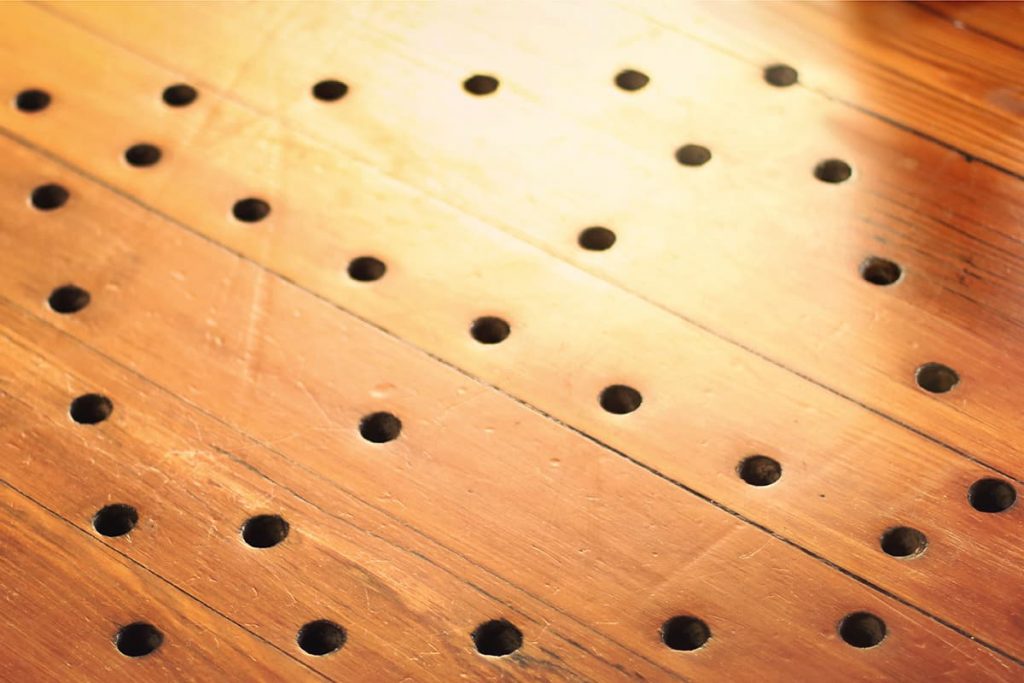
Why It’s Worth Visiting
This is truly one of the most fascinating tours you can do in Savannah!
It’s another that repeatedly makes the cut as one of the top ten tours in my Savannah First-Timer’s Guide, and it’s one I practically insist on whenever I have friends or family in town for a visit.
The church has an archives room that contains a treasure trove of information about Savannah. I’d spend days in there if I could.
Guests are allowed inside the archives room, but you aren’t allowed to take pictures in that particular area.
Know Before You Go
- Website: First African Baptist Church
- Location: 23 Montgomery Street, Savannah, GA 31401
- Tickets: $12 – 15
- Parking: The church owns a private lot at the corner of Montgomery and W Bryan Streets where you can park for approximately $10. The funds go into a work rehabilitation program for otherwise unemployable individuals. You’ll also find metered parking in the immediate vicinity.
- Time to Allot: Depending on the size of the tour group and how many questions people ask, the tour runs between an hour to an hour-and-a-half.
Local Insight: Most of the lighting fixtures in the sanctuary are original to the church. They’ve since been converted to electric, but were originally gas fixtures.
The Beach Institute
The Beach Institute is part of the King-Tisdell Cottage Foundation, which is dedicated to preserving African American history.
It’s officially recognized as the first school in Savannah specifically created to educate African American children after Emancipation.
The school opened in 1867 with a tuition of $1.00 per month.
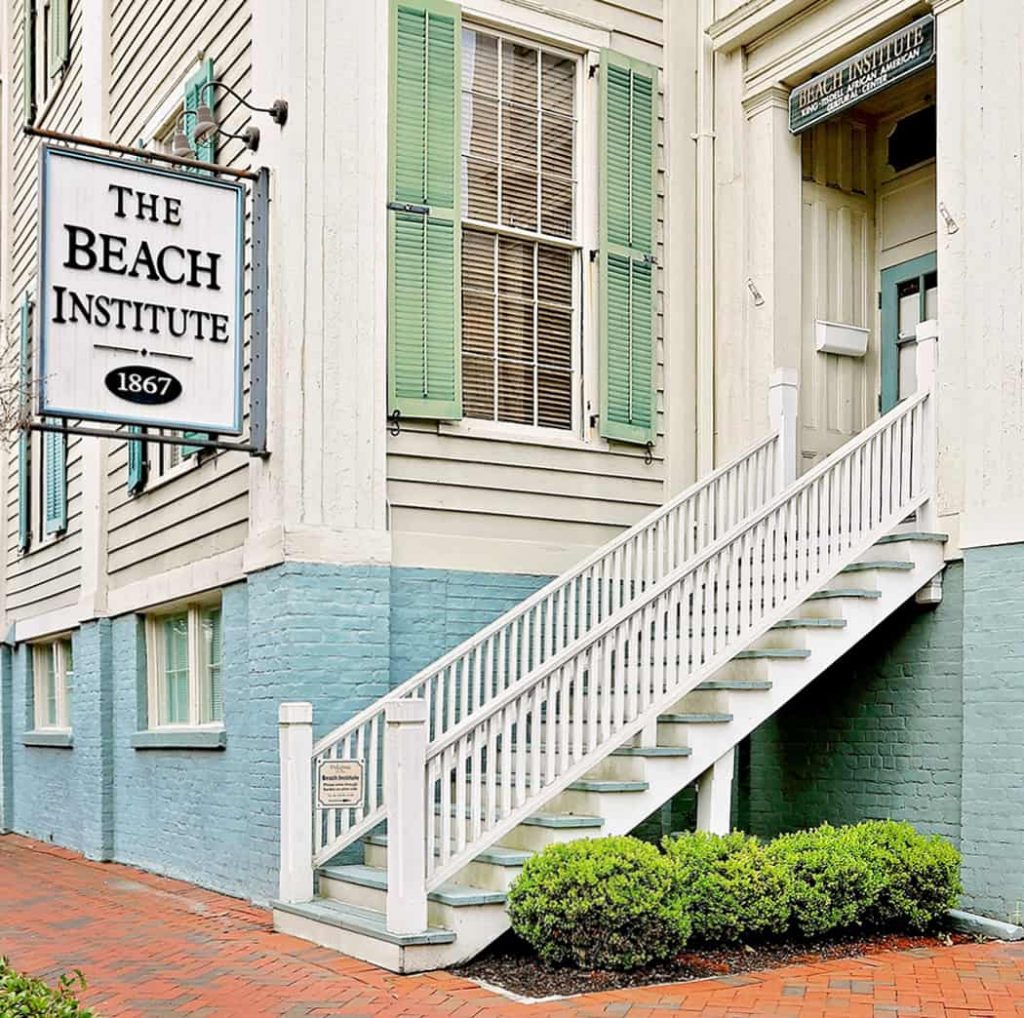
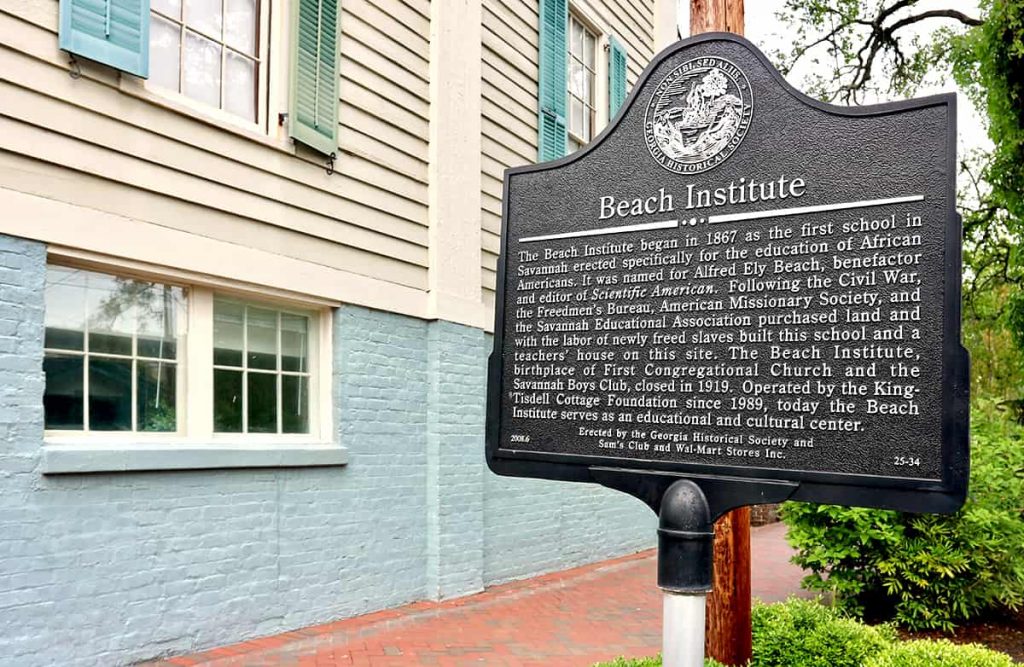
A visit to The Beach Institute is a must for any art or architecture lover.
This former school house hosts permanent and rotating exhibits featuring Black artists. You’ll find sculptures, contemporary art, and thought-provoking creations by local artists in the Savannah-Chatham public schools system.
My favorite exhibit features works by local sculptor Ulysses Davis.
Mr. Davis grew up in Savannah and was somewhat of a local legend. He taught himself to whittle and spent his free time carving small works of art.
He even created his own carving tools, which are on display in the museum.
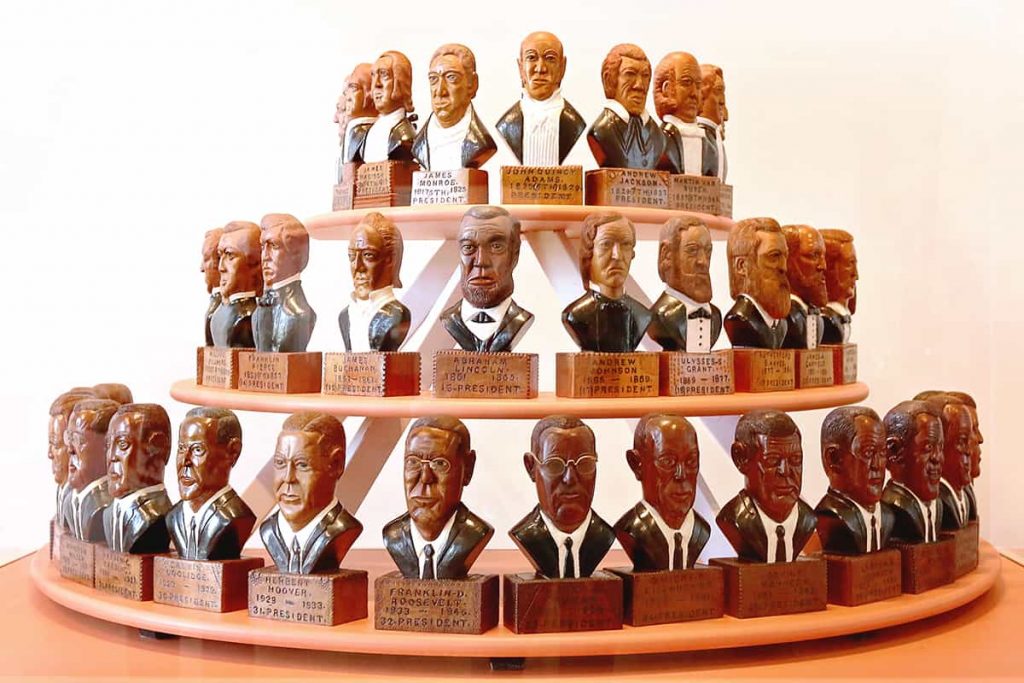
When he was in his forties, Davis opened a barber shop. He displayed his carvings on the interior and exterior of the shop, which was located near Bull and 45th Streets.
Unfortunately, the barbershop is long gone, but the original screen door has been preserved inside the museum.
Guests can also see a recreation of the shop’s interior.
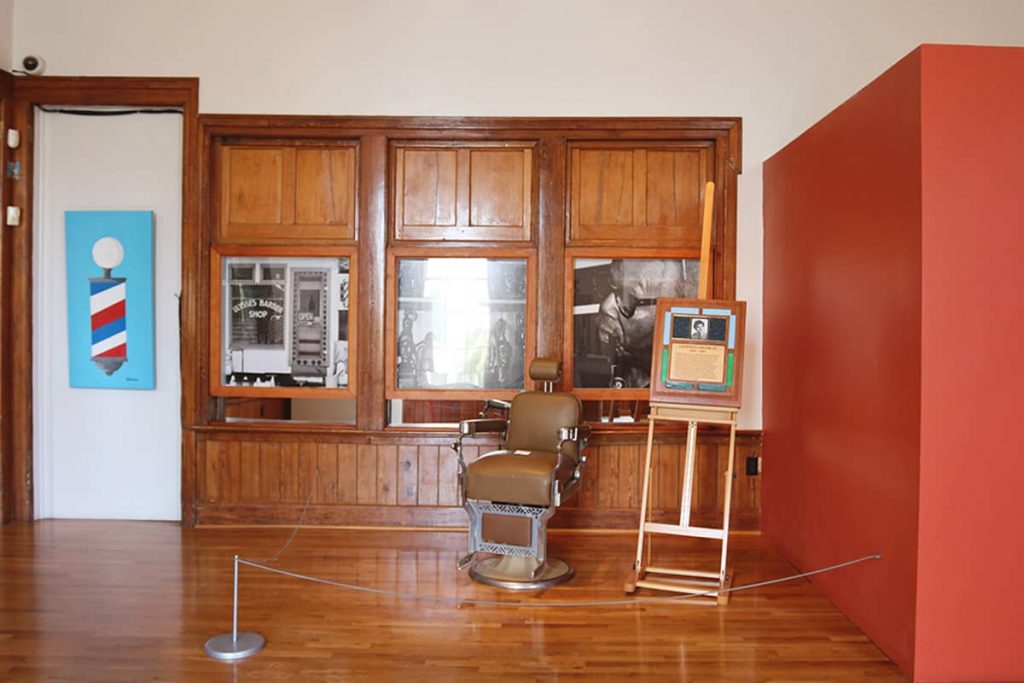
Why It’s Worth Visiting
I’m not a very emotional person by nature, but some of the artwork in the rotating exhibits got me a little teary-eyed.
I could sense the raw emotion in many of the pieces — especially in some of the Black Lives Matter displays done by local high school students.
It’s easy to sense the anguish teens are feeling in light of current events in Georgia — particularly the Ahmaud Arbery case.
Emotional moments aside, the carvings by Mr. Davis are a local treasure.
National museums competed for the right to own his works, but the family accepted a lower bid in order to keep the collection intact in Savannah — knowing that’s what Davis himself would’ve wanted.
The museum is primarily self-guided, but there are times when docents are available to answer questions.
I was lucky enough to be able to speak with native Savannahian named Leitha (I didn’t get her last name) during my time in the museum, and she was very knowledgeable about Davis’ creations.
Know Before You Go
- Website: The Beach Institute & King Tisdell Cottage
- Location: 502 E Harris Street, Savannah, GA 31401
- Tickets: From $7 – $10
- Parking: Street parking in the immediate area is free.
- Time to Allot: Plan to spend 30 to 45 minutes on site.
Local Insight: The architecture of this building is quite impressive. Wait until you see how tall the windows and doors are on the upper two levels!
King-Tisdell Cottage
This beautiful Victorian-style cottage was built in 1896 and was originally located on Ott Street.
It was owned by an African American couple named Eugene and Sara King and later by Mrs. King and her second husband, Robert Tisdell.
The Kings and Tisdells were entrepreneurs and prominent members of the Savannah community. Mrs. King ran a confectionary out of the house.
If you love history, then you’ll enjoy visiting this cottage.
It’s currently the only African American historic home available for touring in Savannah.
While it’s not as fancy as some of the other homes you can tour in Savannah, you’ll learn fascinating stories about the lives of working class Savannahians.
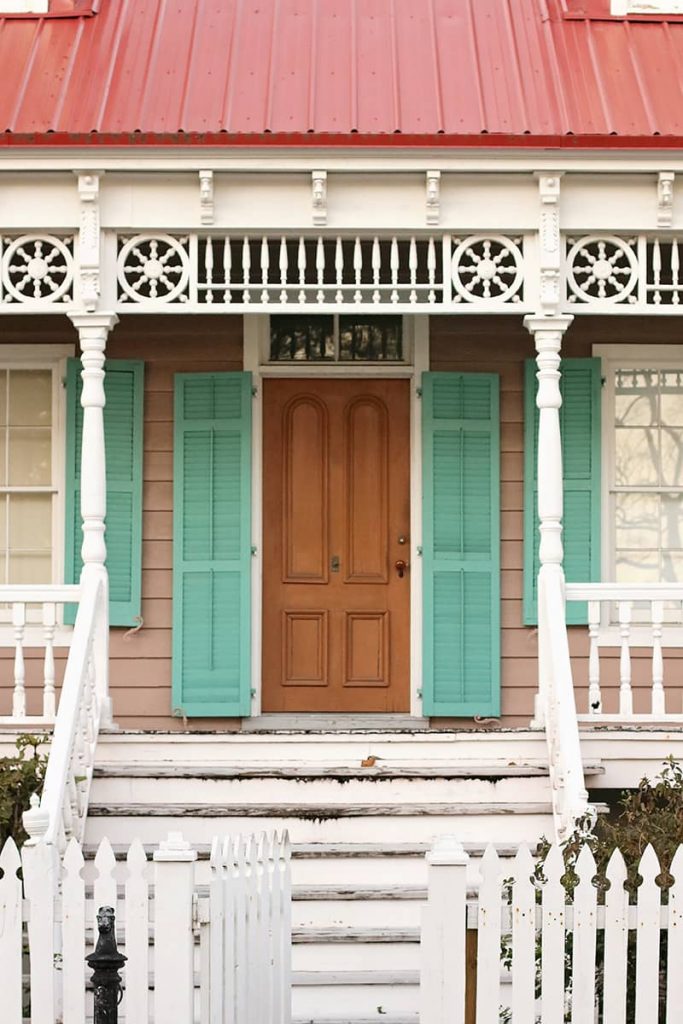
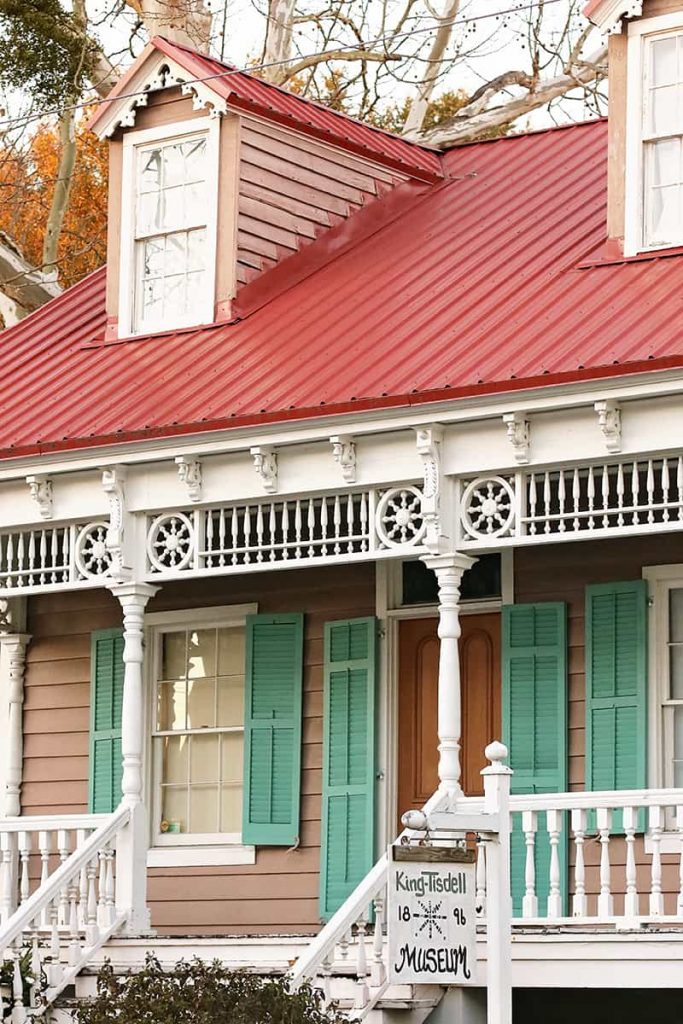
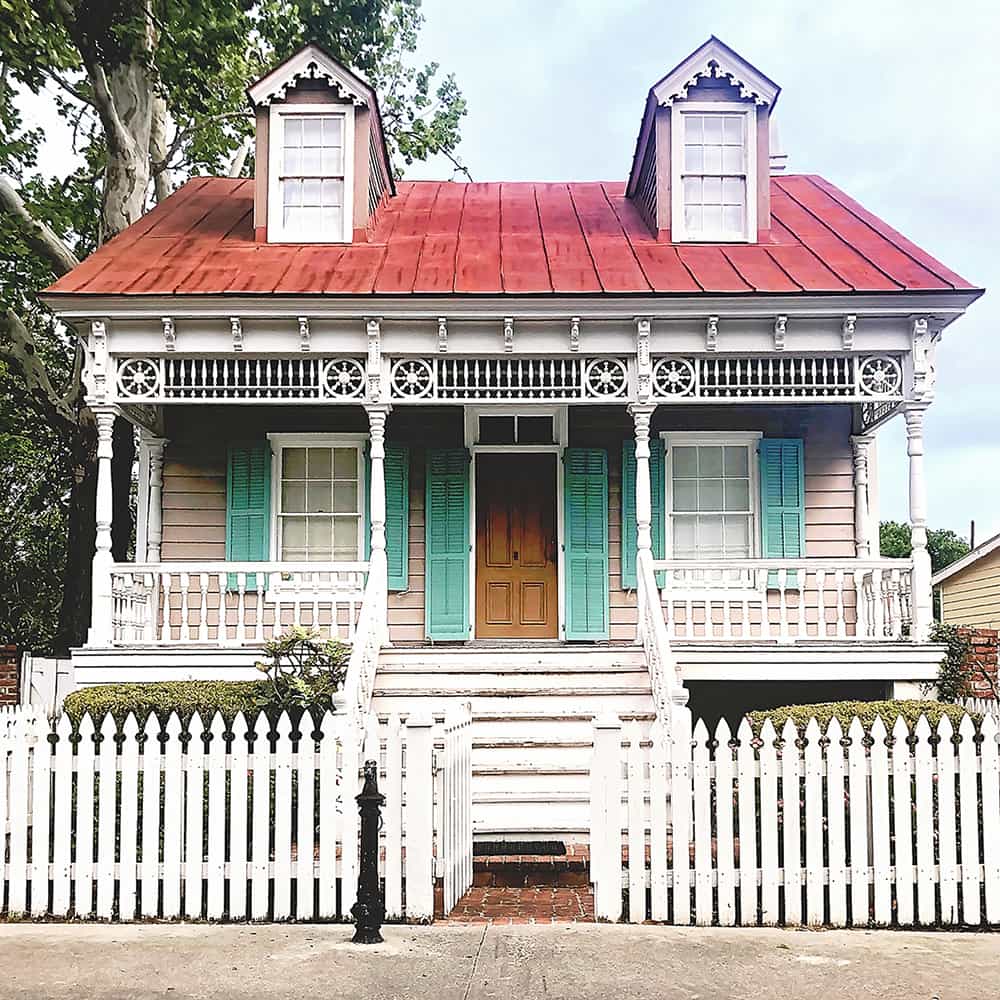
Why It’s Worth Visiting
This house contains one of the best public displays of collections from Westley Wallace Law (W.W. Law), local historian and former head of the NAACP in Savannah.
He collected thousands of photographs documenting the lives of African Americans in Savannah, and one full room in the home is dedicated to his findings.
Know Before You Go
- Website: The Beach Institute & King Tisdell Cottage
- Location: 514 E Huntingdon Street, Savannah, Ga 31401
- Tickets: From $7 – $10
- Parking: Street parking in the immediate area is free.
- Time to Allot: Plan to spend 30 to 45 minutes on site.
Savannah African Art Museum
Founded in 2016, this museum in relatively new to Savannah.
It’s located inside a beautiful historic home on 37th Street and is filled with artifacts from the collection of Mr. Donald Kole.
Most of the pieces showcased within are ceremonial and spiritual items from West and Central Africa.
There are items from 28 different African countries and 180 unique cultures — some permanent and some in rotating collections.
The 1st floor houses objects from West Africa and the 2nd floor covers Central Africa.
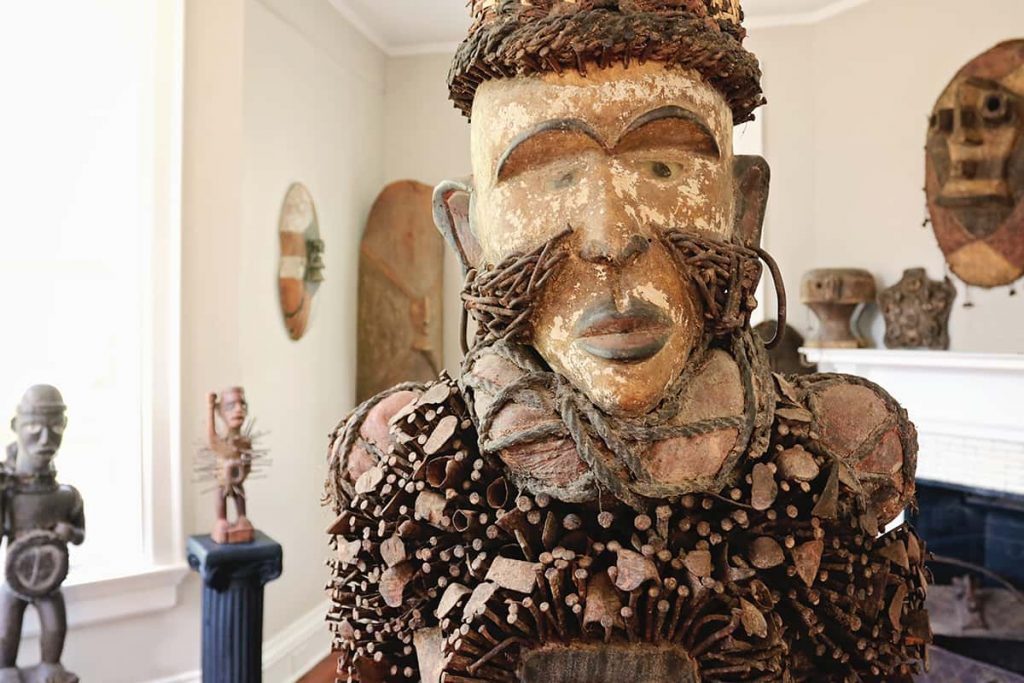
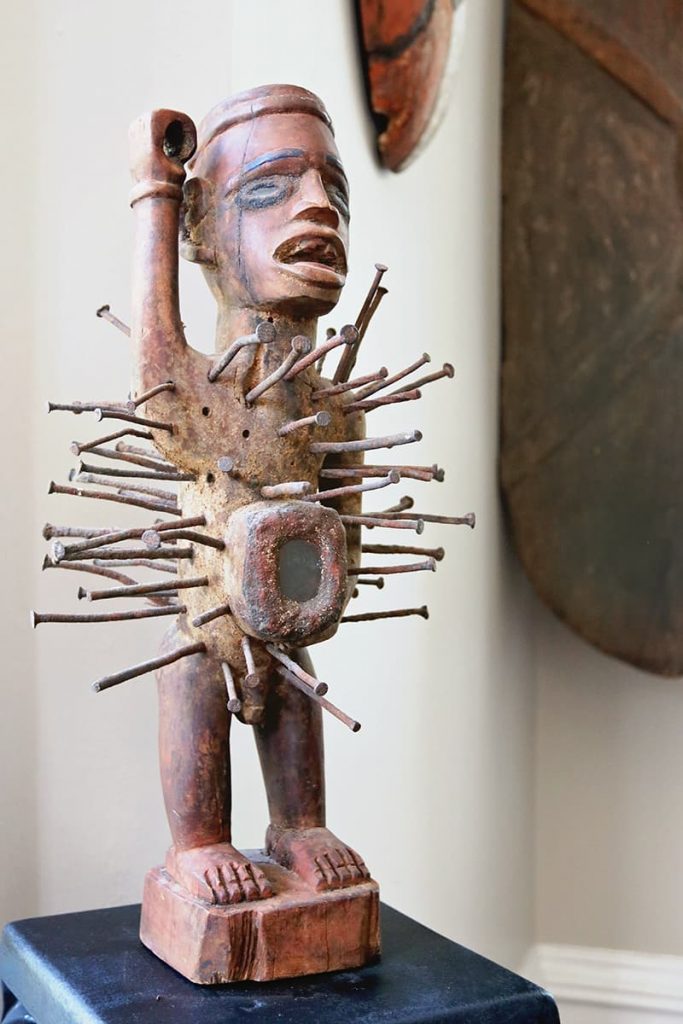
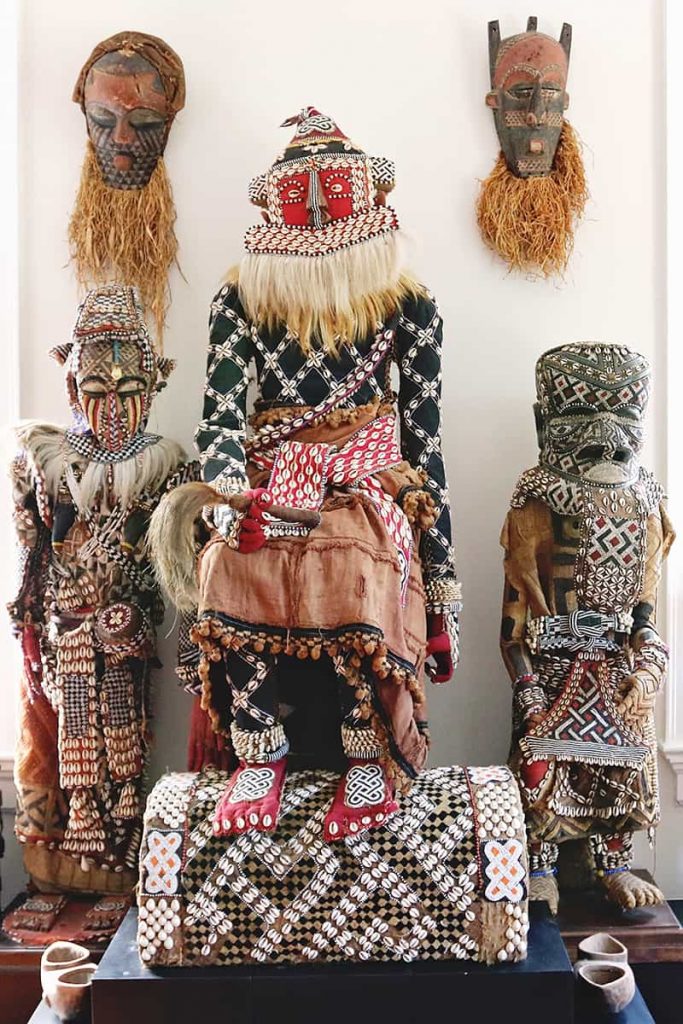
In touring the museum, you’ll learn about the various roles masks, garments, and costumes played in secret societies throughout African culture.
Most items are carved from wood or made of metal, but there are a few samples of pottery and ceramics also on display.
For example, a recent rotating exhibit called “ROOTS: History | Hair | Culture” focused on the cultural significance of African hairstyles throughout history.
Why It’s Worth Visiting
Countless American families descended from men and women who arrived in this country from Africa via the Transatlantic Trade Route.
Those families were forced to leave their possessions — and much of their cultural heritage — behind.
This museum contains an incredibly diverse collection of art from many of those African countries. It’s a place where descendants of enslaved families can go to learn more about their heritage.
The museum operates as a non-profit and is completely FREE to the public. It’s a true hidden gem and an incredible gift to anyone who lives in — or visits — Savannah.
My tour guide was Billie Stultz, a recent SCAD graduate and Executive Director of the museum. She’s definitely a walking encyclopedia on the topic of African traditions!
Know Before You Go
- Website: Savannah African Art Museum
- Location: 201 E 37th Street, Savannah, GA 31401
- Tickets: FREE (you can make donations, if moved to do so)
- Parking: Street parking in the immediate area is free, and there’s also a small off-street parking lot.
- Time to Allot: The guided tour takes approximately one hour.
African American Monument Savannah
This monument in downtown Savannah is located on River Street and depicts an enslaved family who has just been freed.
Their faces are solemn, and the remnants of a broken chain lies at their feet.
It was the first monument in the Historic District to publicly acknowledge the City of Savannah’s role in the institution of slavery — an admission that didn’t come until the early 2000’s.
The monument almost wasn’t approved, since Maya Angelou’s quote at the base of the statue was considered too controversial for the tourism-driven city of Savannah.
Ms. Angelou amended her quote with one additional line at the end, and it was approved after that final addition.
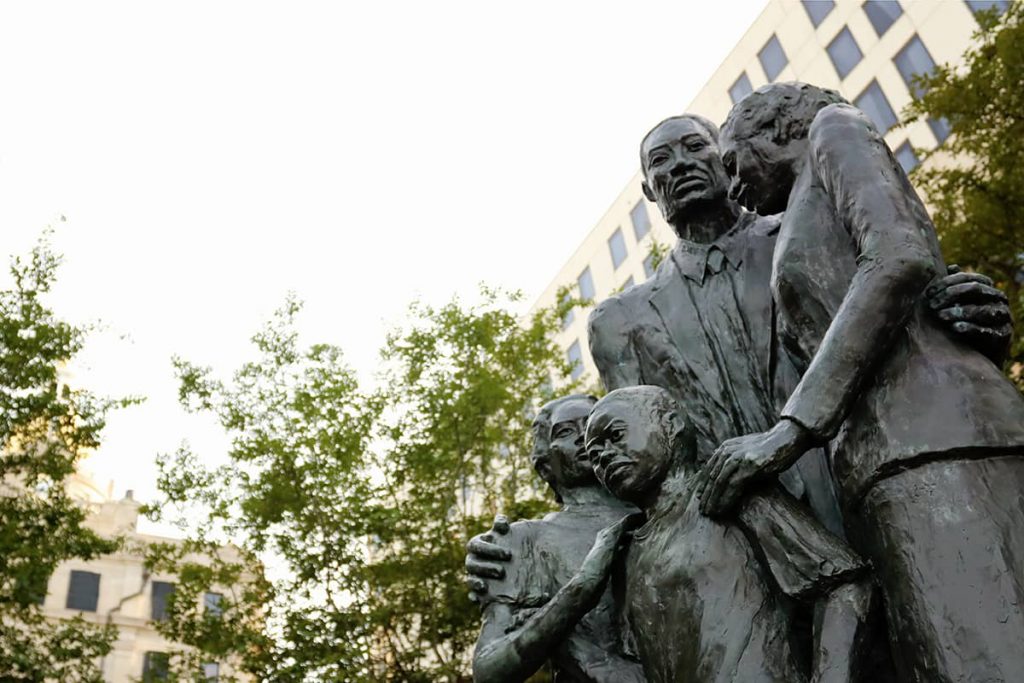
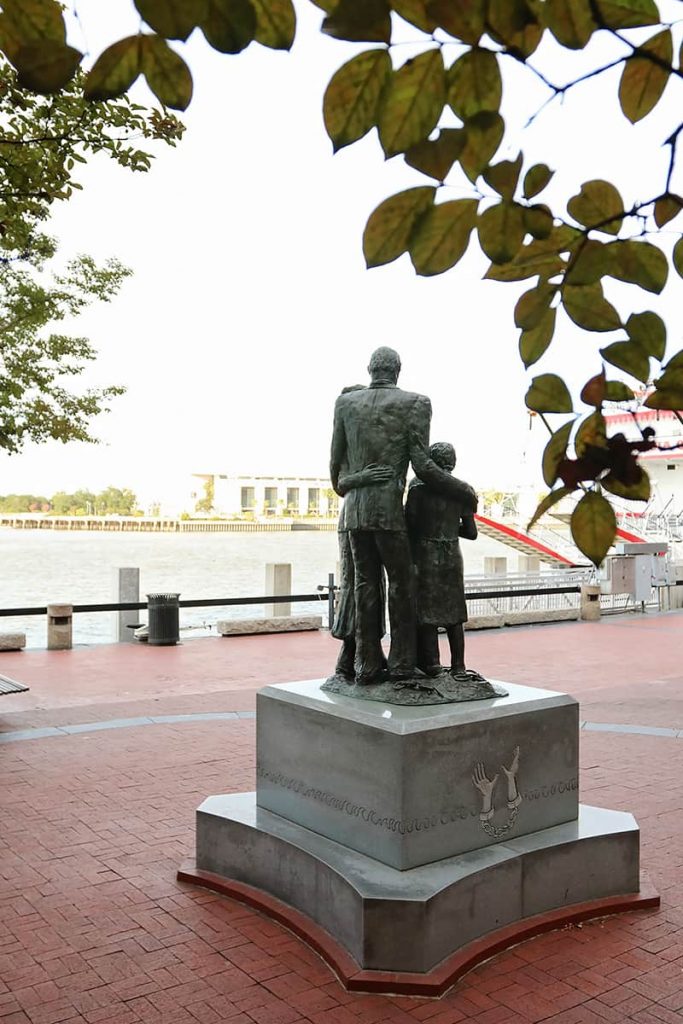
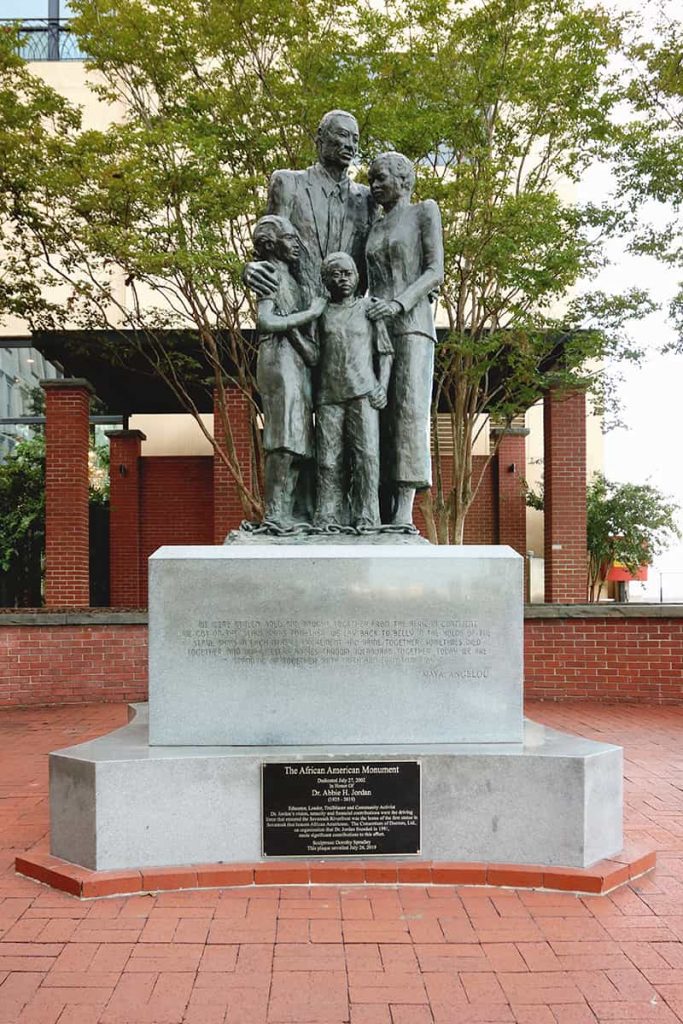
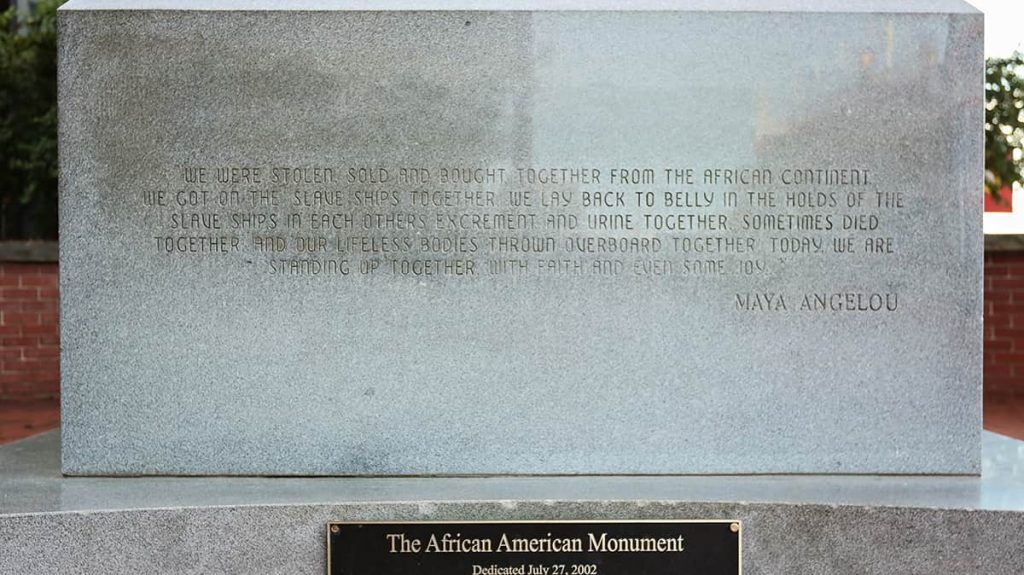
We were stolen, sold and bought together from the African continent. We got on the slave ships together. We lay back to belly in the holds of the slave ships in each others’ excrement and urine together, sometimes died together, and our lifeless bodies thrown overboard together.
Today we are standing up together, with faith and even some joy.
Maya Angelou – The African American Monument
Why It’s Worth Visiting
River Street isn’t just a place to stroll around with a to go cup on St. Patrick’s Day; it’s the place where thousands of enslaved families first set foot on the ground in the United States.
This monument is one of the few places along River Street acknowledging the terrible conditions those enslaved men, women, and children endured before arriving into the port of Savannah.
Know Before You Go
- Location: 1 W River Street, Savannah, GA 31401
- Tickets: None required; it’s a public monument
- Parking: Parking on River Street is hard to come by. There are a couple lots, but the spaces fill quickly. You can try to park along the E Upper Factors Walk ramp (near Vic’s on the River restaurant) and walk to it. The two closest city parking garages are the Whitaker Street Garage and the Bryan Street Garage. Here are some of my top Savannah parking tips.
- Time to Allot: Plan to spend 5 to 10 minutes on site.
Local Insight: There’s a very unique counterpoint to this memorial tucked away in a lane on Savannah’s east side. It’s known as the Black Holocaust Memorial, and it was created by local artist James “Double Dutch” Kimball.
Related Reading: Why Savannah’s African American Monument was so Controversial
The Weeping Time
“The Weeping Time” was a terrible event that occurred in Savannah. It ended up being the single largest sale of enslaved people in American history.
It happened when plantation owner Pierce Butler, of the Butler Plantation near Darien, GA, squandered his inheritance and was forced to sell off much of the property he owned.
That “property” included enslaved men, women, children. It even included 30 babies.
The sale, which was brokered by Savannah’s former Chief of Police, Joseph Bryan, was advertised in newspapers far and wide. Potential buyers flocked to Savannah to attend the two-day auction, which was held at the Ten Broeck Race Track on Savannah’s far west side.
Enslaved families who had spent their entire lives together on the plantation were separated and sold to the highest bidder in an attempt to settle Butler’s gambling debts and stock market losses.
Between 429 – 436 enslaved individuals were sold during the two-day event.
Since rain poured from the skies the entire two days of the sale — and many say God was weeping for the inhumanity of it all — the event has become known as “The Weeping Time”.
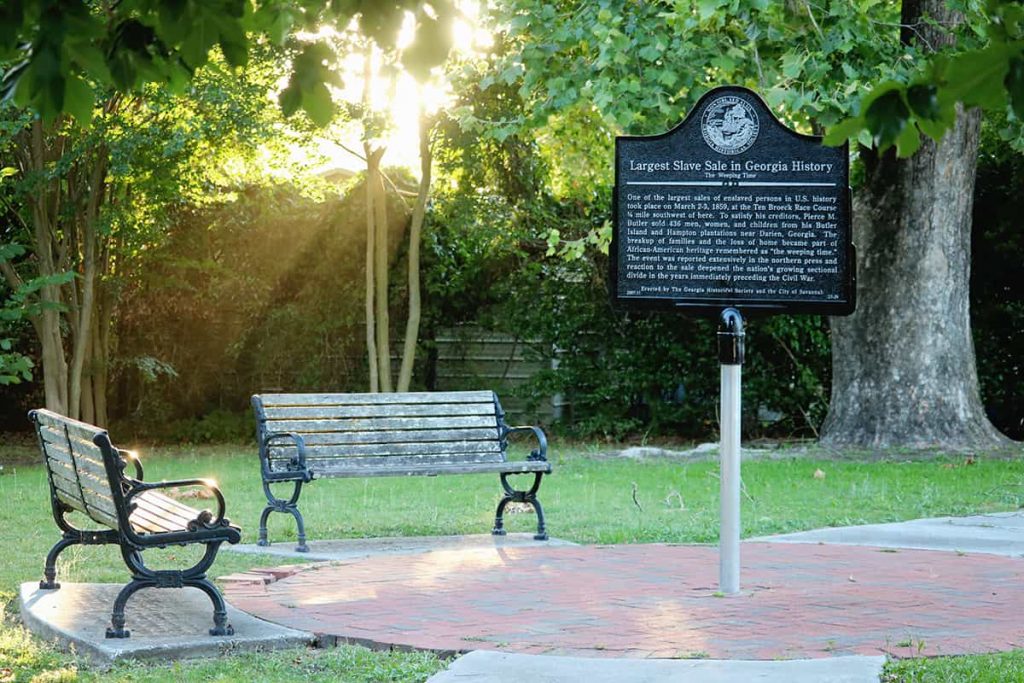
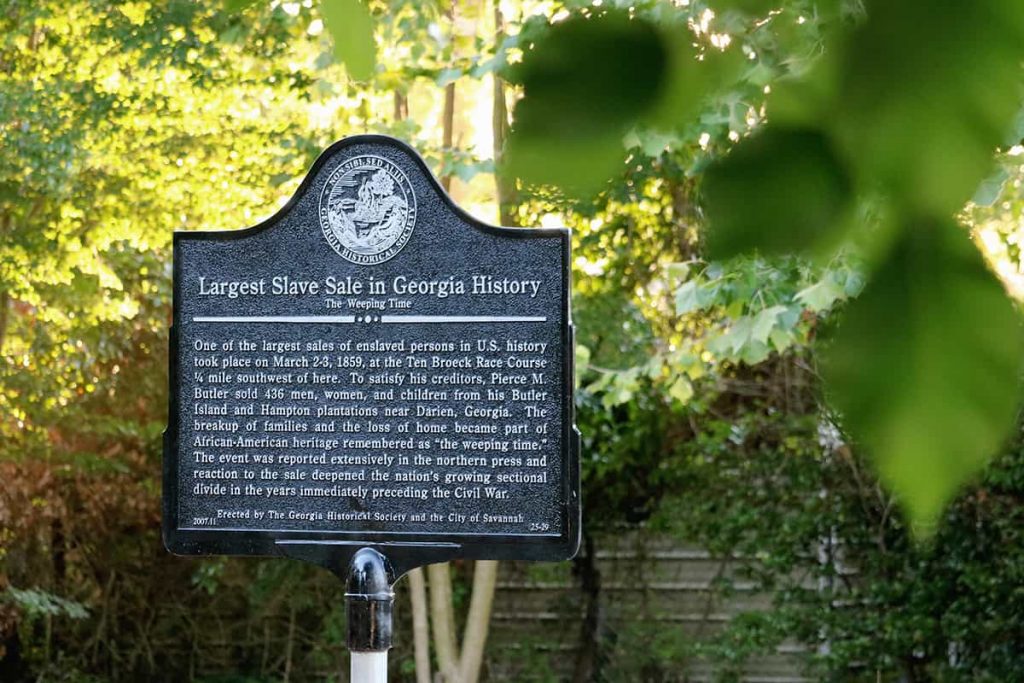
The blades of grass on all the Butler estates are outnumbered by the tears that are poured out in agony at the wreck that has been wrought in happy homes, and the crushing grief that has been laid on loving hearts.
Q.K. Philander Doesticks, What Became of the Slaves on a Georgia Plantation: Great Auction Sale of Slaves at Savannah, GA, 1863
The race track is long gone, but you can find a Historic Marker commemorating the event 1/4th of a mile from where the sale took place.
Why It’s Worth Visiting
I’ve already mentioned that few places in Savannah make me emotional, but this is one spot that brings tears to my eyes.
The marker sits on a beautiful sliver of land with two nearby benches where you can contemplate one of the darkest moments in this country’s history.
It’s a peaceful spot, located right in the middle of a typical west side Savannah neighborhood full of modest, single-family homes.
As you can see in the photos above, it looks very beautiful at sunset.
Know Before You Go
- Location: The intersection of Augusta Avenue & Dunn Street, Savannah, GA 31415
- Tickets: None needed. It’s a public area and on city-owned property.
- Parking: Parking in the immediate area is free, but a bit difficult to find. There’s no dedicated parking for the site, and it’s right off of a fairly busy road. You can park on Dunn Street, but please be respectful of the sweet neighbors who live there and don’t block access to and from their homes. NOTE: This is an area I’d advise first-time visitors to avoid after dark.
- Time to Allot: Plan to spend 10 to 15 minutes on site.
There is currently a contentious debate about proposed use for land surrounding the site of the original Weeping Time event, which is slated to house a Salvation Army homeless shelter.
For the record, I’m against using that location for that purpose.
I would like to see The Weeping Time property and the surrounding land utilized as a memorial site and educational center, similar to the Penn Center on St. Helena Island in S.C.
Related Reading: Unearthing the Weeping Time: Savannah’s Ten Broeck Race Course and 1859 Slave Sale
Colored Carnegie Library
Known as the “Library for Colored Citizens” or the “Colored Carnegie Library”, this was one of the only spaces in Savannah where Black families had public access to books in the early 1900s.
Blacks weren’t allowed in the city’s main library at the time (the Bull Street Library), since the library system in Savannah didn’t fully integrate until 1963.
The library was funded by a Carnegie grant of $12,000.
The Colored Library Association of Savannah used donations from the community to purchase the land, and then the building was completed in 1915.
It closed in 1997 due to a water leak in the roof, but reopened a few years later after undergoing a massive renovation that cost $1.3 million.
It still operates as a library today.
Supreme Court Justice Clarence Thomas wrote in his memoirs that he spent many hours in the library doing research as a young adult.
He returned to Savannah in 2004 to help celebrate the library’s reopening.
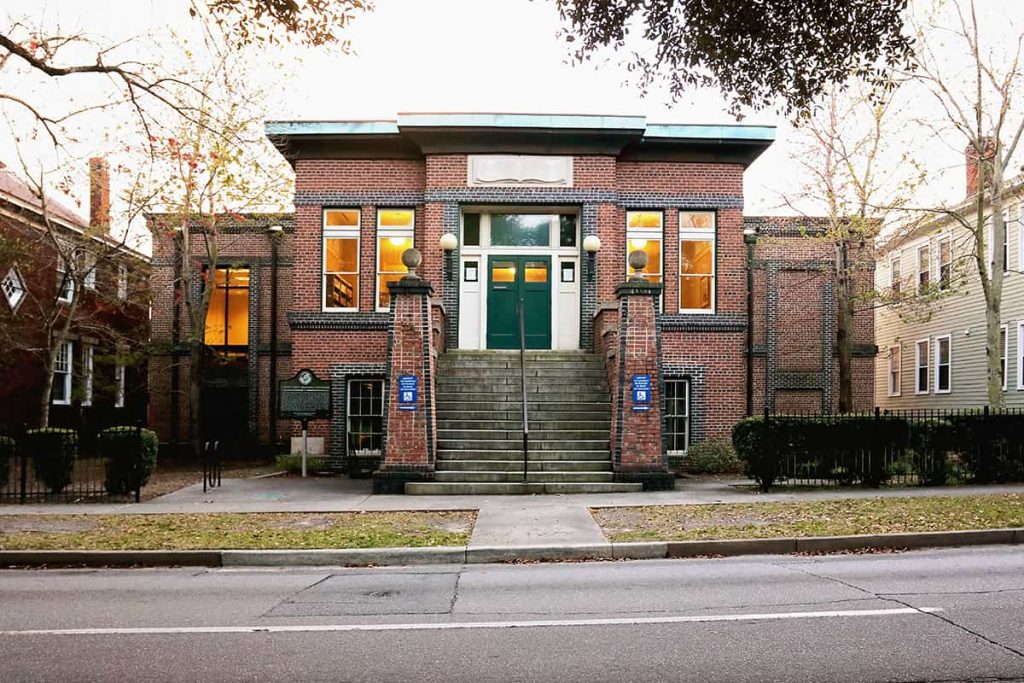
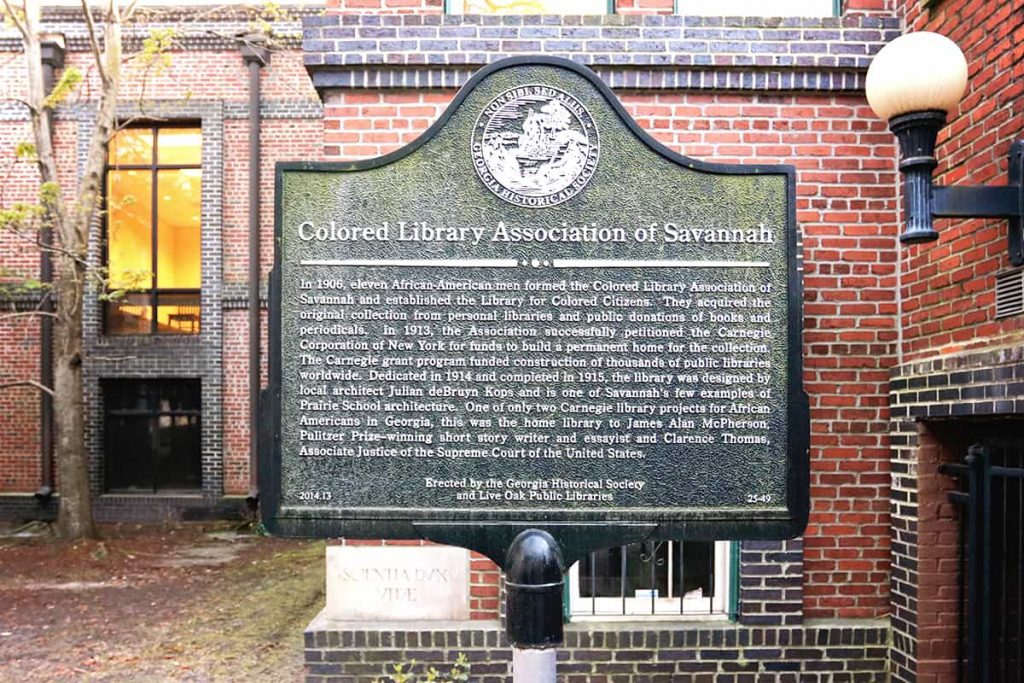
The library was listed on the National Register of Historic Places in 1974. It’s currently part of the Live Oak system of libraries.
Know Before You Go
- Website: Carnegie Library
- Location: 537 E Henry Street, Savannah, GA 31401
- Tickets: None needed. It’s a public library.
- Parking: Street parking in the immediate area is free.
- Time to Allot: It’s an active library, so it isn’t particularly meant for touring. If you go, please be observant of those who are there for its intended purposes. If you only stop by to see the exterior, plan on spending 5 to 10 minutes.
Related Reading: A Local’s Guide to Laurel Grove South
Ralph Mark Gilbert Civil Rights Museum
On Martin Luther King, Jr. Blvd., in what was once the heart of Savannah’s Black-owned business community, you’ll find a three-story building full of exhibits on the era of Jim Crow, racial injustice, and the Civil Rights movement in Savannah.
The exhibits contain historic photos, documentaries, and interactive pieces about discrimination, boycotts, the role of the KKK in the South, and the birth of the NAACP in Savannah.
You’ll also learn about some of the biggest trailblazers in Savannah’s Civil Right movement, including Dr. Ralph Mark Gilbert (who served as the pastor at First African Baptist Church for 16 years), Westley Wallace Law aka W.W. Law, and Rev. Hosea Williams.
Displays posted throughout the museum show the horrific treatment of Blacks in the South during Jim Crow times.
You’ll see signage pulled from local businesses denoting “Whites Only” and “No Negroes Allowed” and displays showing what it was like to sit at a lunch counter during the time of segregation.
Even the building that houses the museum is historic.
It originally served as the Wage Earners Savings Bank, which was founded by Blacks in the early 1900s. It was instrumental in funding many Black-owned Savannah businesses.
Why It’s Worth Visiting
The museum does an incredible job of educating visitors on Civil Rights issues as they relate to Savannah, specifically.
It will open your heart to the struggles many faced on a daily basis in Savannah, some of which still exist in the South today in one form or another.
Many of the docents are locals who lived through the Jim Crow era. They provide personal accounts of their experiences in Savannah.
The museum offers an incredible opportunity to speak with them and hear their accounts first-hand!
Know Before You Go
- Website: Ralph Mark Gilbert Civil Rights Museum
- Location: 460 Martin Luther King, Jr., Blvd., Savannah, GA 31401
- Tickets: $6 to $10
- Parking: Street Parking in the immediate area is metered, or you can park at the nearby Visitor Center and walk.
- Time to Allot: 2 hours
Local Insight: Savannah has a long history of conflict-free protests regarding social injustices. During the Jim Crow era, the local Black community worked together using peaceful methods to enact positive changes, primarily due do the leadership of W.W. Law. In recent years, when other cities saw violent protests and rioting during BLM events, Savannah’s protests were peaceful and without incident.
Guided Black History Tours: Led by Locals
Most of the spots listed above are places you can tour on your own.
If you’d prefer a guided tour where you’ll be able to see multiple points of interest, I recommend exploring the city with a local who can provide first-hand knowledge regarding Black culture in the Deep South.
There are some incredible guides in Savannah who can escort you through the city while providing personal accounts of their experiences as direct descendants (in many instances) of the Gullah Geechee people.
Underground Tours of Savannah
The most popular tour led by Underground Tours of Savannah is the From Slavery to Freedom Tour.
It’s a walking + riding tour through downtown Savannah showing where African Americans lived in the Historic District during the late 1700s to mid 1800s and how they were treated during that time period.
Sistah Patt is the heart and soul of Underground Tours.
She’s incredibly knowledgeable and presents Savannah’s African history in a very engaging manner.
Folks who take her tour rave about her storytelling ability, as well as her bigger-than-life personality…
We just did the Sistah Patt tour today! She is so warm and friendly. Very engaging storyteller and she speaks matter of factly. We learned so much on the tour. The history of the brick walks and honestly the way Savannah tries to deny the slave history was fascinating. Loved!
Melissa C. – via my Savannah First-Timer’s Guide private Facebook group
The tour will take you on a few blocks through the NW section of the Historic District. You’ll stop at points of interest such as the African American Monument (mentioned above) and the Cluskey Vaults.
Sistah Patt’s current project is working as an advocate to encourage the renaming of two of Savannah’s squares. Calhoun Square and Whitefield Square were named after men who were avid supporters of slavery.
Know Before You Go
- Tour Info: From Slavery to Freedom
- Location: 223 Martin Luther King, Jr. Blvd (please verify on your ticket receipt)
- Tickets: Approximately $60 for 2 guests
- Parking: Street parking in the immediate area is metered, or you can park at the nearby Visitor Center and walk.
- Time to Allot: 2 hours
Footprints of Savannah Tour
This tour is led by Vaughnette Goode-Walker, aka “Sistah V”.
It’s one I’ve yet to try but I’m looking forward to going and have only heard good things about it! I’ll add some photos once I’ve been.
Ms. Goode-Walker is the director of the Ralph Mark Gilbert Civil Rights Museum. She’s also a local historian who has authored two books about Savannah.
Additionally, she was a key consultant in the King Tisdell Cottage restoration and its conversion into a museum.
When I last spoke with Mrs. Goode-Walker (spring of 2023), she had placed her walking tours on hold while busy with an addition to the Civil Rights Museum. You might want to opt for Sistah Patt’s tour in the meantime.
Know Before You Go
- Facebook: Footprints of Savannah
- Location: Contact for meeting point
- Tickets: Contact for rates
- Time to Allot: 1 hour
Day Clean Journeys Tour
I haven’t done this tour yet, either, but it’s another I look forward to trying.
It’s led by local professor and historian Dr. Amir Jamal Touré. The tour comes highly recommended by Leitha, who was the docent I met while touring The Beach Institute.
Dr. Touré has been recognized by the State of Georgia as an “Outstanding Georgia Citizen.” He is known for his expertise on the Gullah Geechee community.
He was actually the model used to create the male father figure in the African American Monument!
Day Clean (dey-kleen): Each day is a new day; each day starts anew; no matter what occurred yesterday – today is a new day!
Gullah Geechee Philosophy and meaning behind the name “Day Clean Journeys”
Know Before You Go
- Facebook: Day Clean Soul
- Location: Contact for meeting point
- Tickets: Contact for rates
- Time to Allot: 2 hours
I know I’ve covered a lot of information in this post, but so many visitors focus on ghost tours while they’re in Savannah that I think the more important cultural sites are often overlooked.
Here’s a free printable to help you remember each of these sites as you make your way around the city.
Savannah Travel Guide
Ok, that wraps up my thoughts on some of the best Black history tours in Savannah. If you’ve experienced an informative tour that I missed here, please let me know in the comments below!
If you’re looking for resources to plan a trip to Savannah, here are a few I’ve created…
- Savannah First-Timer’s Guide – My ebook combines my most helpful tips from this website into a downloadable guide. You’ll also gain access to my (very active) private Facebook group with your purchase. Use it to pick my brain about your upcoming travels or read trip reports from others who have recently visited.
- Savannah FTG Free Resources Library – Get a free printable list of “50 Things To Do on Foot in the Historic District (No Car Needed!),” plus more fun goodies.
For more things to do in the city, check out my Savannah trolley tour reviews or read about the best Bonaventure Cemetery tours.
Do you have any questions about Black history tours in Savannah? Let me know in the comments below!
Love this post? Pin it now to save for later!

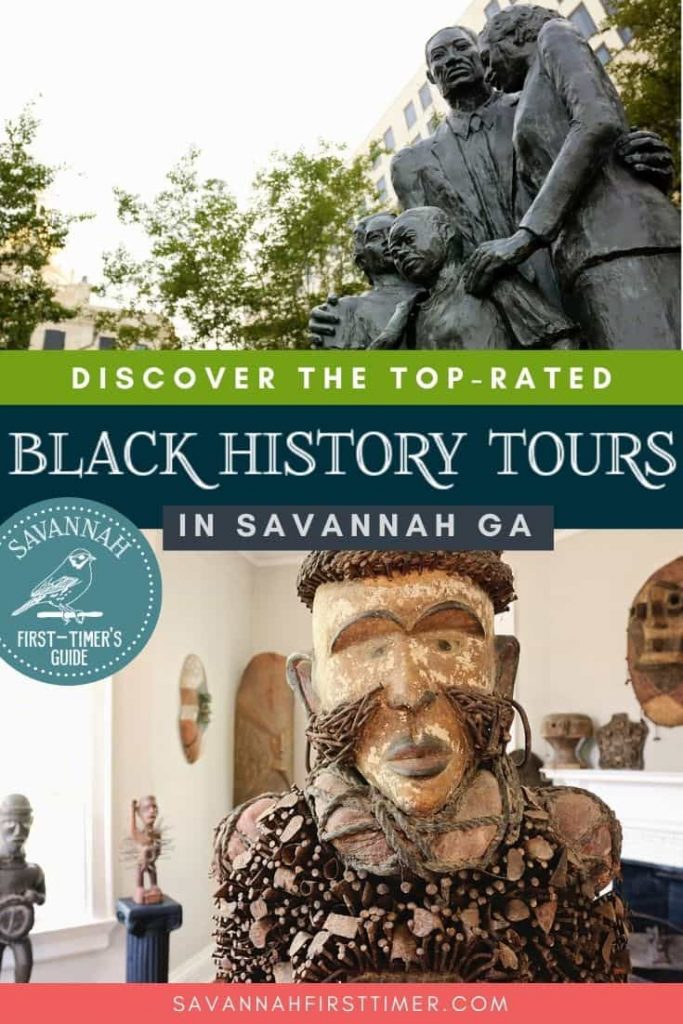
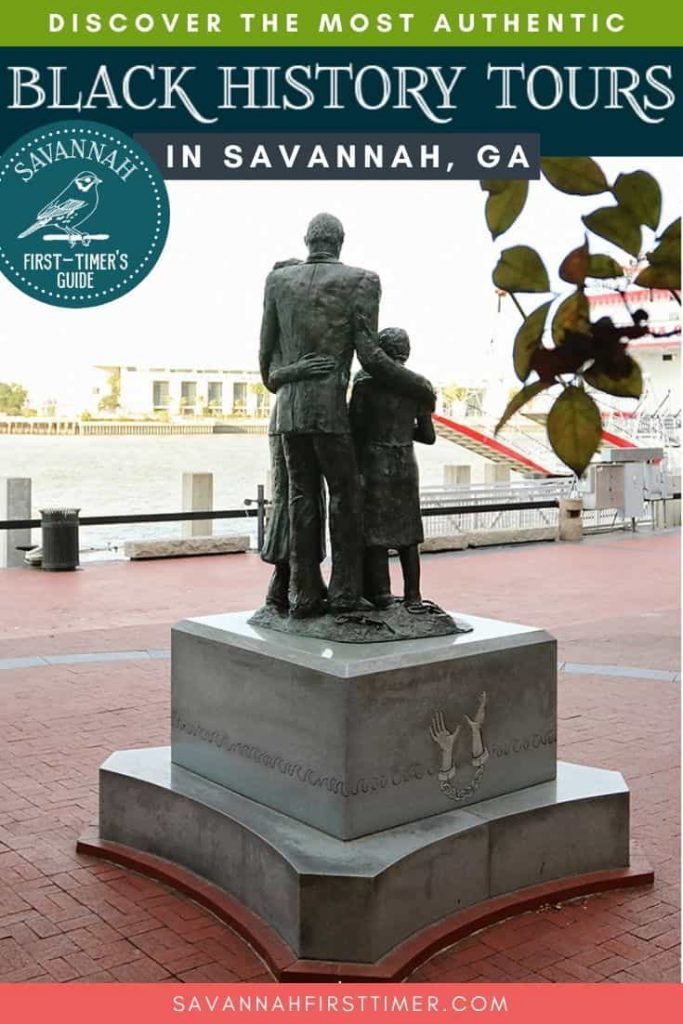
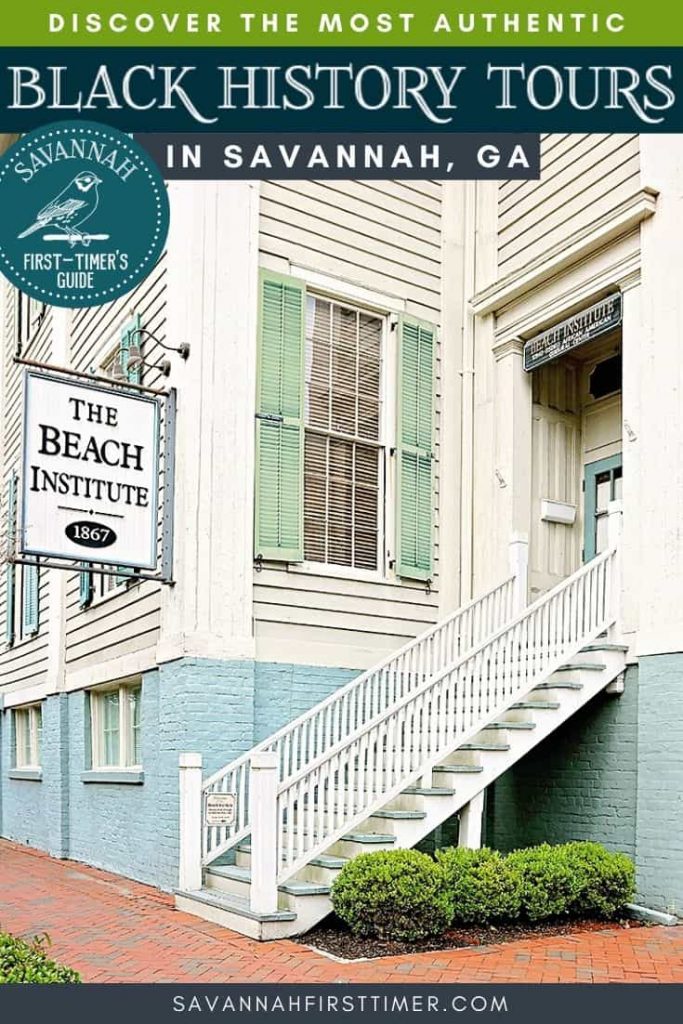
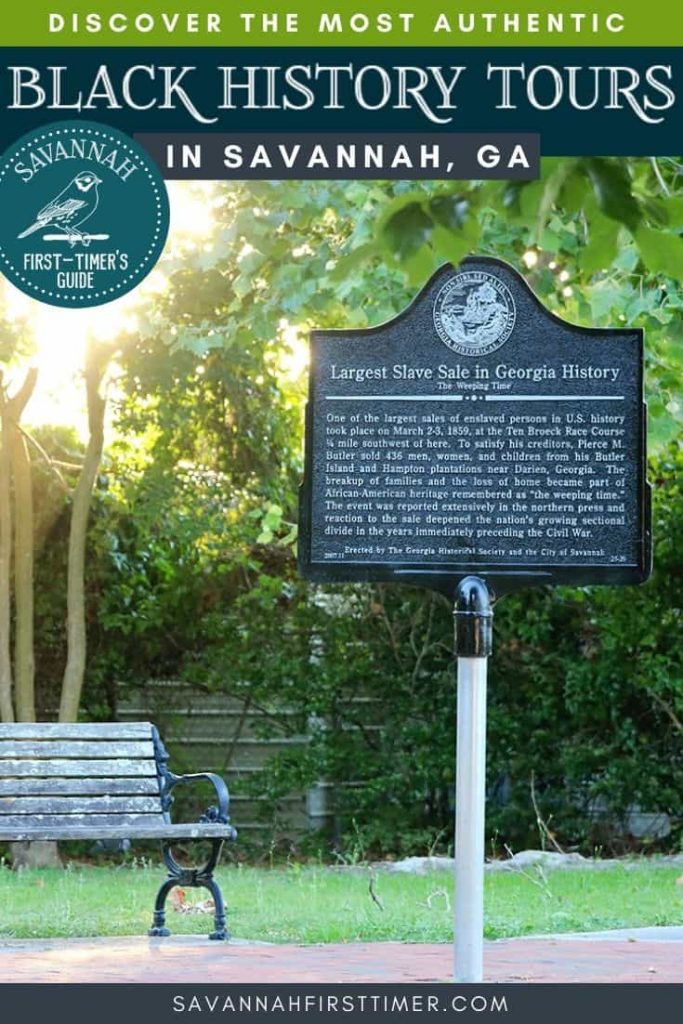

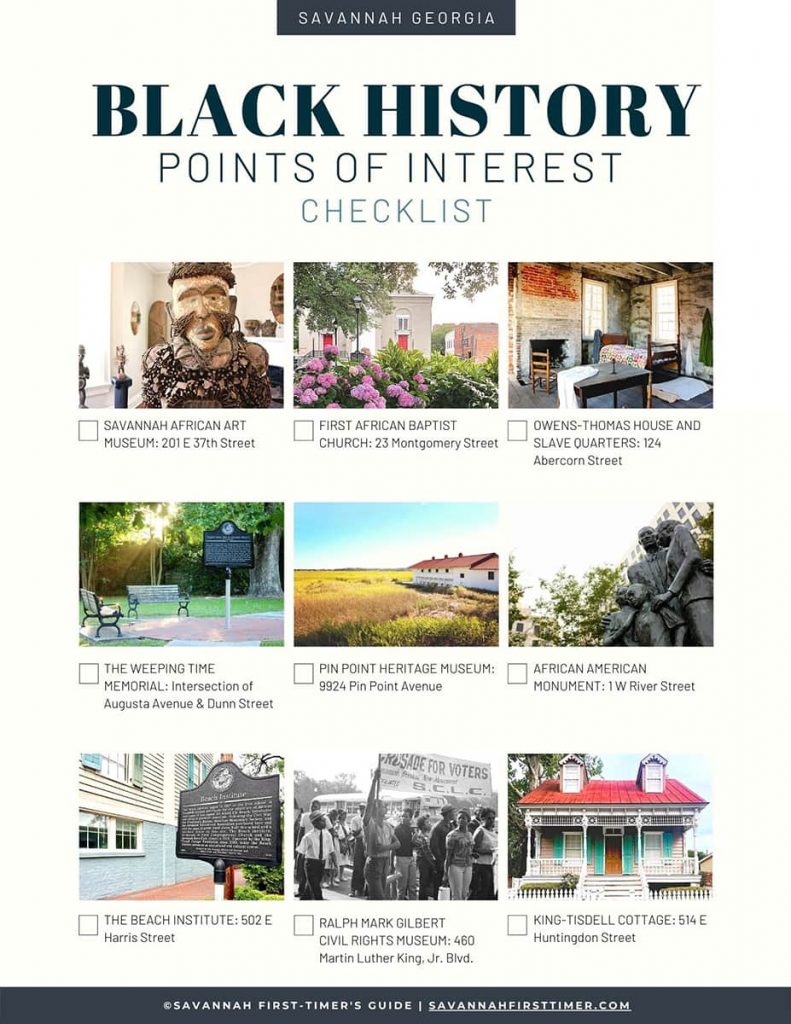
What great info and love all the bits of history that I wasn’t aware of! I’d definitely want to visit Pin Point and sunsets on Butter Bean Beach with that name! I had no idea the plantation owners usually lived in town. I always assumed they lived on the plantations. So informative!
I thought the same thing until I went on the Owens-Thomas tour! That’s one of the nice things about Savannah…there’s always something new to learn.
This is such an informative article and I love how there are a lot of educational places in Savannah. I’m definitely keeping this post handy for when I return there. 🙂 Thank you for sharing!
This is such an informative post and I found it very emotional. I find it hard to understand why humans treated other humans like this. I hope this never happens again and it is great there are so many museums and memorials to remind us. All lives matter.
This is an absolutely incredible post, I can’t wait to get back to USA so I can visit Savannah! I can’t imagine how much you learn on one of these tours. Definitely bookmarking for later, thanks for sharing!
What a fantastic post. I had not really heard of Urban slavery before (but as soon as I read it, it made sense.) It is sobering to visit sights like this, rather than just reading about them.
The Savannah African Art Museum looks really interesting, too.
This is so informative and a great guide to which tours to do in Savannah. I’ve never been to GA but would love to learn more about the history
Its great to explore the history of a country and its people, and gain a greater understanding of how it came to be.
Hi, Somewhere we saw a black history tour led by a man..and will do private tours. Do you know about this tour? Thanks, Judy
Hi Judy! I believe that’s Dr. Toure, who is mentioned at the bottom of the post under Day Clean Journeys. Try reaching out at this number: (912) 220-5966
Erin, thank you for this incredible post. It is so informative and is such an important part of US history that is oftentimes sadly overlooked or maybe even omitted. Thank you for bringing attention to these places that can be so emotional. and tough to visit. I will definitely share this with friends and family that visit Savannah.
wow! I had no idea there were so many tours available to learn more about Black History in Savannah. Every time I read one of your posts, I realize we need to get back to Savannah–esp considering we live in GA! Thanks for all the information, I look forward to taking some of these tours. It’s so important we learn more about this part of our country’s history.
Thank you for this well researched informative article. I have just returned from my first visit to Savannah and didn’t read this until I returned home. I was able to visit a few of the mentioned sites.
Your photos are much better than mine!
I’m glad it was helpful! Since I live downtown, I’m able to visit the museums at random times when they aren’t very busy, so that makes it easier to get good photos 🙂
Checking today, the underground tours of Savannah is no longer listed
I messaged Sistah Patt, so hopefully she’ll be able to fix the site quickly. She is still offering tours. Until her site is back online, you could try reaching out to her via her company’s FB page: https://www.facebook.com/SLAVESINTHECITY